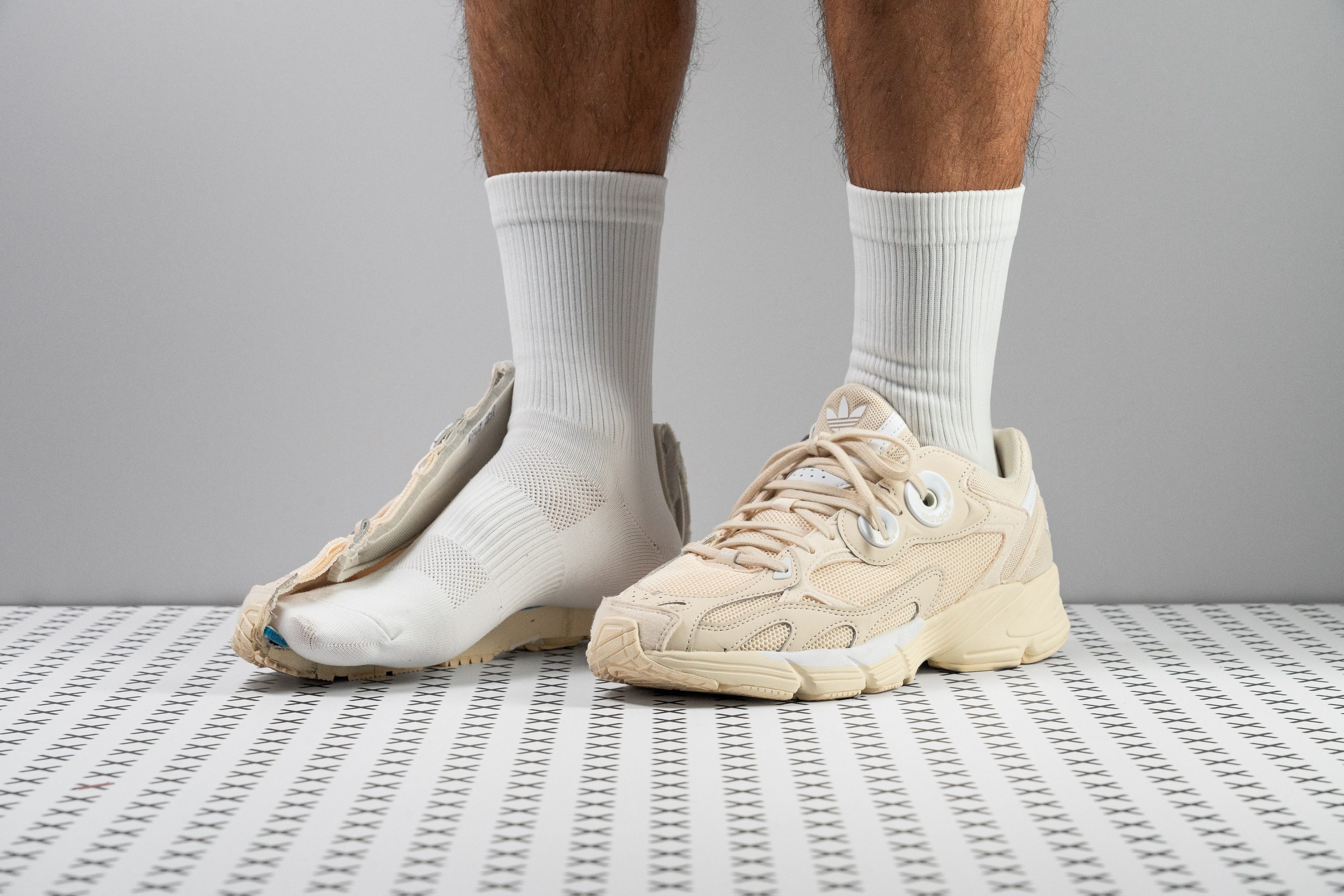Our verdict
Pros
- Very comfortable all day long
- Incredibly resistant materials
- Quite lightweight
- Chunky profile with 90s vibes
- Ready for the summer
- Stylish all-rounder
- A lot of colorways
- Easy on the pocket
- Minimum of 50% recycled content
Cons
- Feels a bit narrow
- Heel slippage might be an issue
Audience verdict
- Top 5% in trainers
- Top 6% in Adidas trainers
Comparison
The most similar trainers compared
+ + Add a shoe | |||||
|---|---|---|---|---|---|
| Audience score | 95 Superb! | 89 Good! | 90 Good! | 92 Great! | |
| Price | £85 | £80 | £155 | £100 | |
| Style | DadSportyChunky | RetroSporty | RetroSportyFuturistic | ClassicDadRetroSporty | |
| Shock absorption | - | Moderate | Moderate | High | |
| Energy return | - | Moderate | High | Moderate | |
| Traction | - | Moderate | Moderate | High | |
| Breathability | Breathable | Breathable | Breathable | Breathable | |
| Weight lab | 12.2 oz / 347g | 11.1 oz / 315g | 13.1 oz / 370g | 10.9 oz / 308g | |
| Size | True to size | True to size | True to size | True to size | |
| Midsole softness | Balanced | Firm | Balanced | Balanced | |
| Material | LeatherMesh | LeatherMesh | Mesh | Mesh | |
| Season | Summer | SpringFall | Summer | SpringFall | |
| Inspired from | Running | Running | Running | Running | |
| Width / fit | Medium | Medium | Wide | Medium | |
| Toebox width | Medium | Medium | Medium | Medium | |
| Leather/suede quality | - | - | - | Real suede | |
| Toebox durability | Good | Decent | Good | Bad | |
| Heel padding durability | Decent | Decent | Decent | Decent | |
| Outsole durability | Good | Bad | Good | Good | |
| Heel stack lab | 35.3 mm | 35.8 mm | 40.3 mm | 37.3 mm | |
| Stiffness | Stiff | Moderate | Moderate | Moderate | |
| Tongue padding | Average | Average | Average | Average | |
| Drop lab | 15.0 mm | 15.6 mm | 15.8 mm | 11.9 mm | |
| Forefoot | 20.3 mm | 20.2 mm | 24.5 mm | 25.4 mm | |
| Removable insole | ✓ | ✓ | ✓ | ✓ | |
| Heel tab | None | None | None | Finger loop | |
| Torsional rigidity | Moderate | Moderate | Moderate | Moderate | |
| Heel counter stiffness | Moderate | Stiff | Stiff | Flexible | |
| Sustainable | ✓ | ✗ | ✗ | ✗ | |
| Closure | Laces | Laces | Laces | Laces | |
| Top | Low top | Low top | Low top | Low top | |
| Ranking | #5 Top 5% | #87 Bottom 28% | #64 Bottom 47% | #38 Top 32% | |
| Popularity | #103 Bottom 14% | #66 Bottom 45% | #58 Top 48% | #2 Top 2% |
Who should buy
Don't let this 90s queen get away from you if you're looking for:
- A comfortable and stylish pair to wear all day and all night.
- A new pair with an old vibe that matches the retro trend.
- A lightweight shoe that bends easily with your feet.
- An affordable sneaker with a lot of colorways that might match your whole wardrobe.
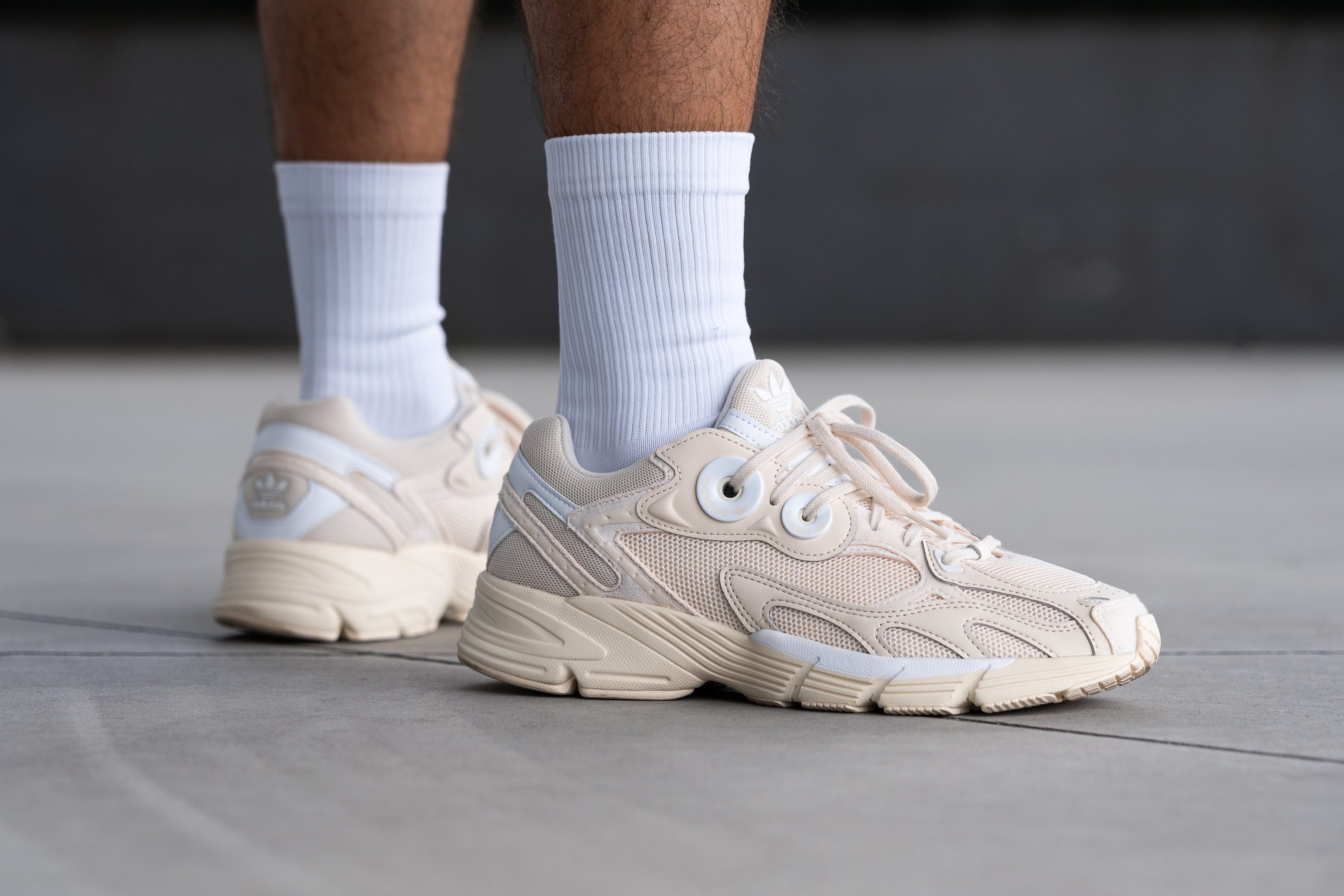
Who should not buy
We didn't find many cons when we analysed this shoe in our wear and lab tests, to be honest! But it did feel slightly narrow when we put it on. We buy each and every model in the same size, a US 9, and we can definitely say we didn't feel this one was true to size. If you're looking for an Adidas pair with the same '90s vibe, we believe you should have a look at the Adidas Ozweego, which is also ideal for wide feet!
If you're looking for an icon but you want to wear it during winter too, the leather structure of the super well-known Adidas Stan Smith might be just what you need! It's a unisex shoe and it comes in a thousand colorways. Definitely a safe bet if you never wanna go out of style!
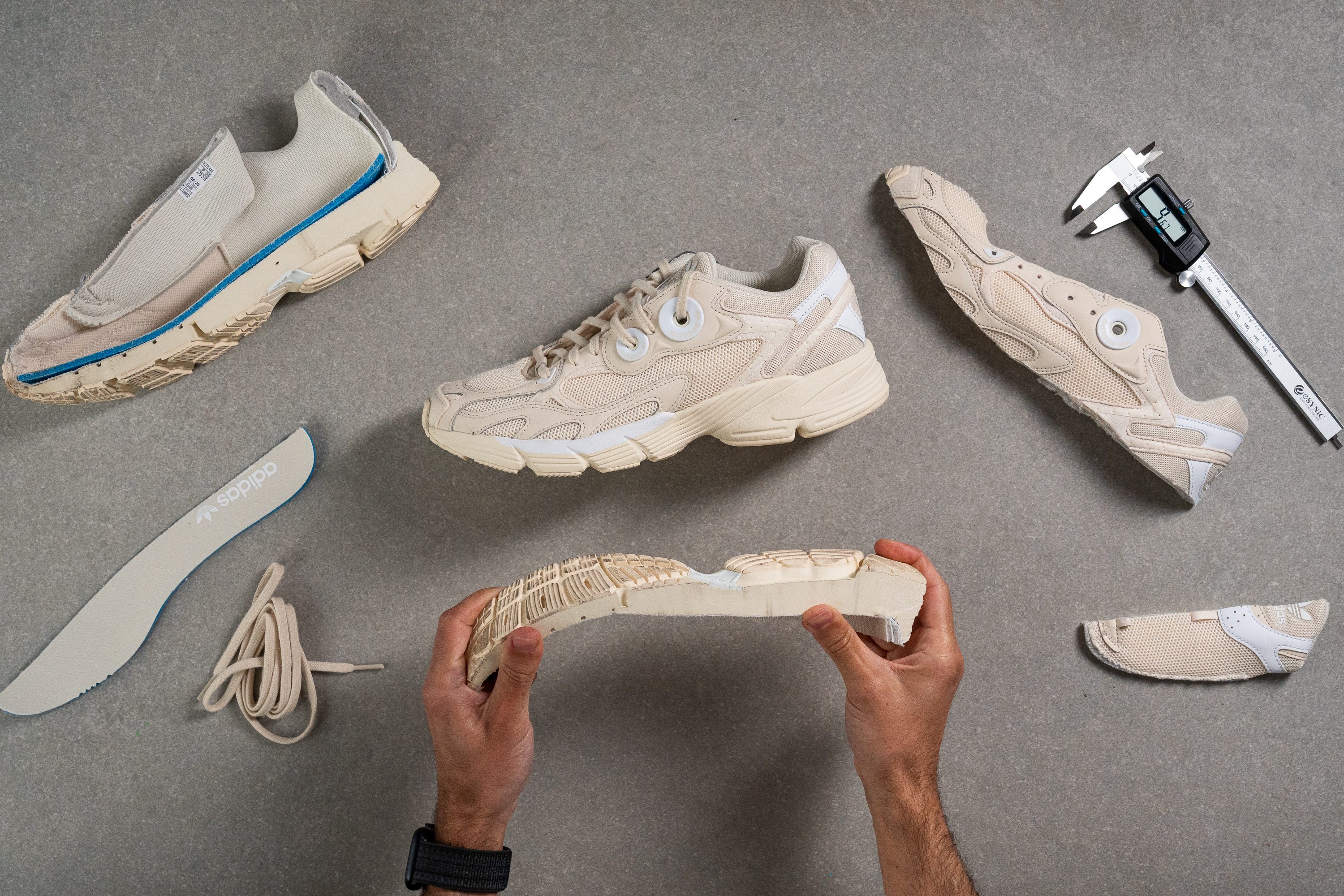
Cushioning
Heel stack
The Astir's chunky vibe is not only on its upper, its sole is the same!
Check how soft it looks in the video. Our feet felt incredibly happy!
When we went back to the lab, we grabbed our calliper and measured the heel stack at an incredible 35.3 mm. We can confidently say our boost in confidence came hand in hand with a boost in height.
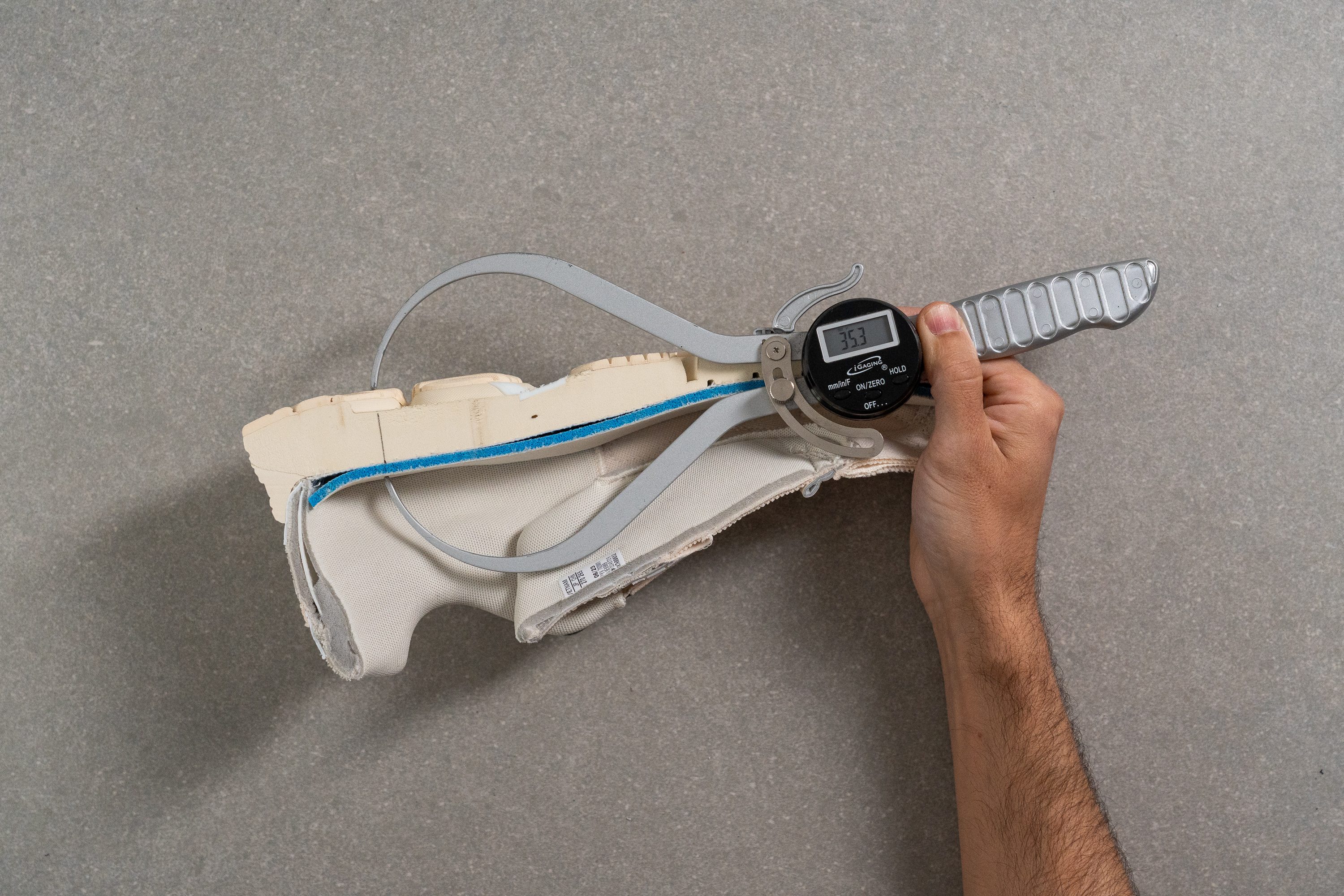
Yep, we loved it! The buffed-up sole gives this Adidas that 90's rugged vibe that is so trendy these days.
| Astir | 35.3 mm |
| Average | 30.7 mm |
Forefoot stack
At 20.3 mm, this shoe's forefoot stack follows the same path as the heel: being higher than average!
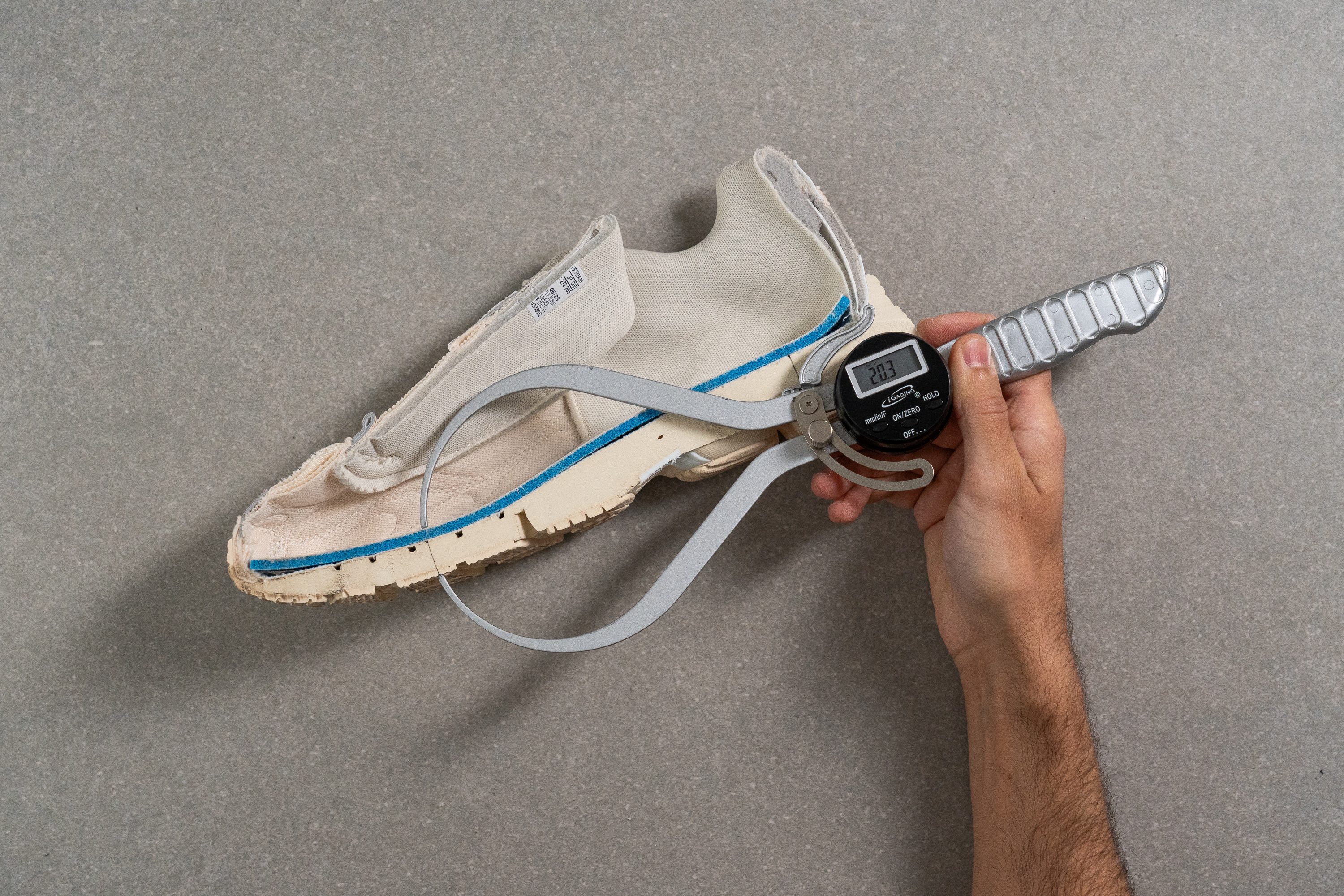
When we went out with this Adidas during our wear tests, we felt pretty comfortable and protected. The overall high height stack helped us when we stepped on any kind of obstacle in the city, which is always great news!
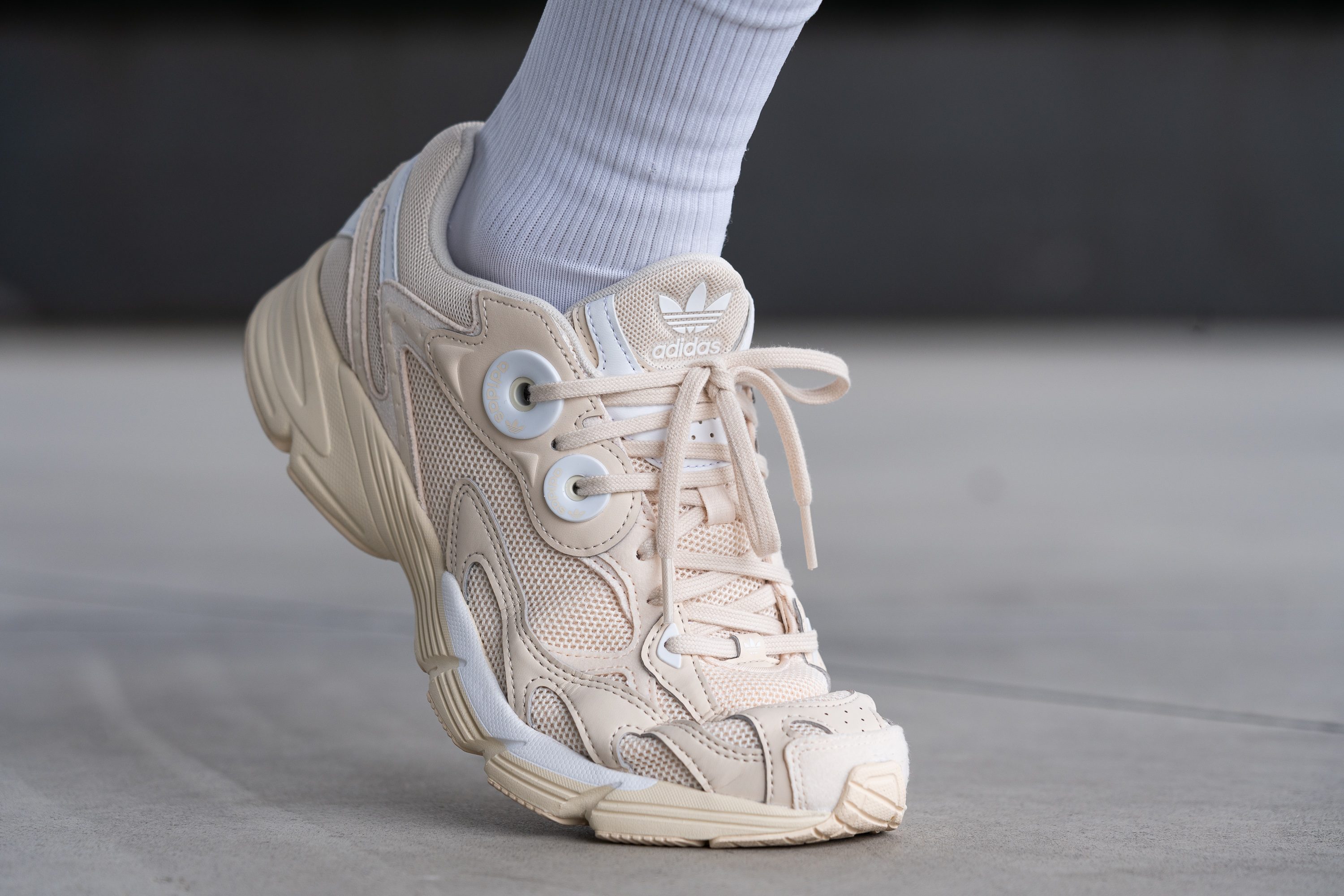
| Astir | 20.3 mm |
| Average | 19.5 mm |
Drop
You can most likely see it in the picture, this model's drop is wild!
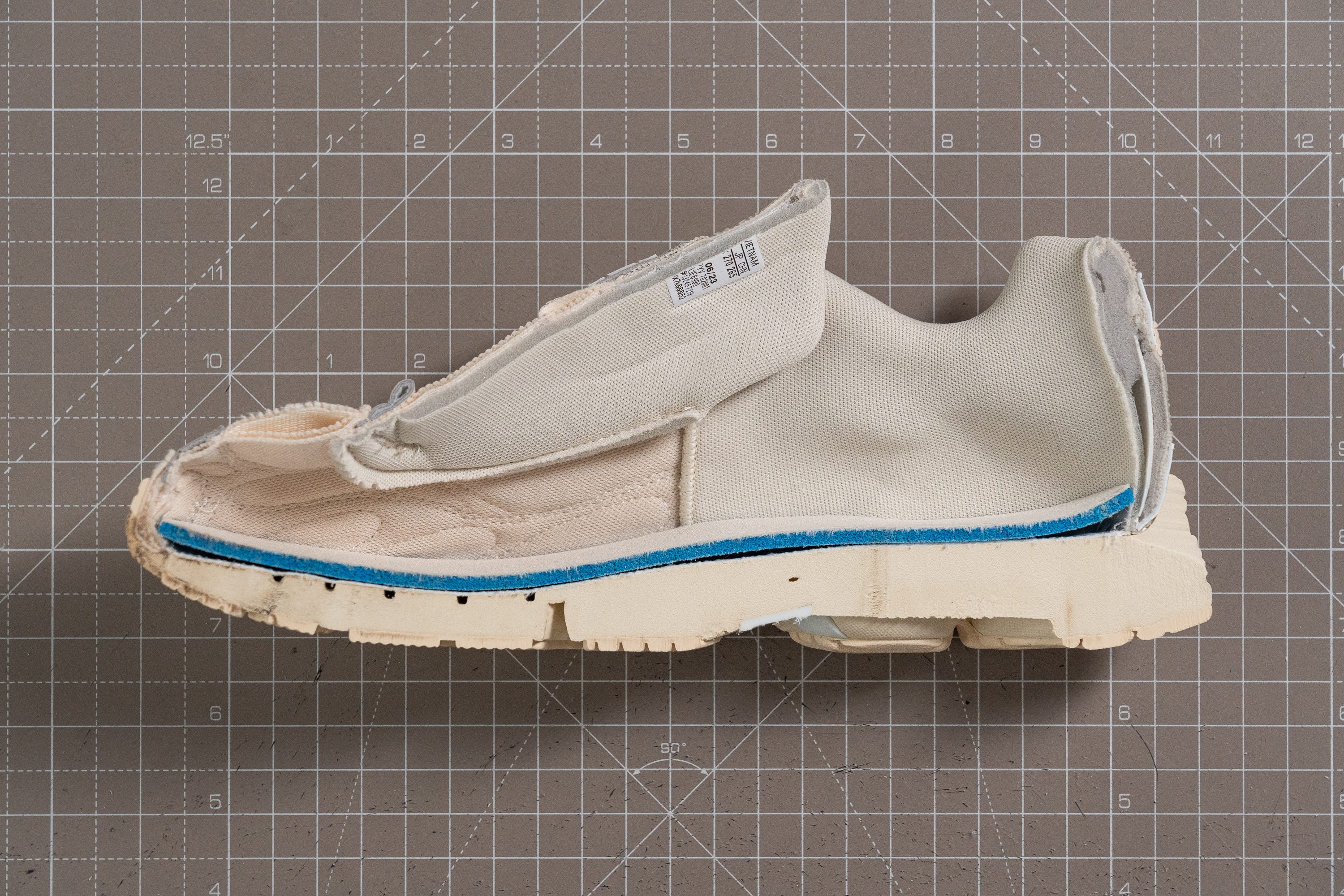
Its 15 mm might sound like a lot, but we didn't feel uncomfortable or anything like that because of it. Actually, we enjoyed this shoe's overall comfort level! A higher or lower drop is not something that can be labelled as "good" or "bad", it literally depends on your personal taste and preferences.
| Astir | 15.0 mm |
| Average | 11.2 mm |
Midsole softness
We know we've mentioned it before, but we want to say once again how comfortable we felt wearing this shoe during our wear test!
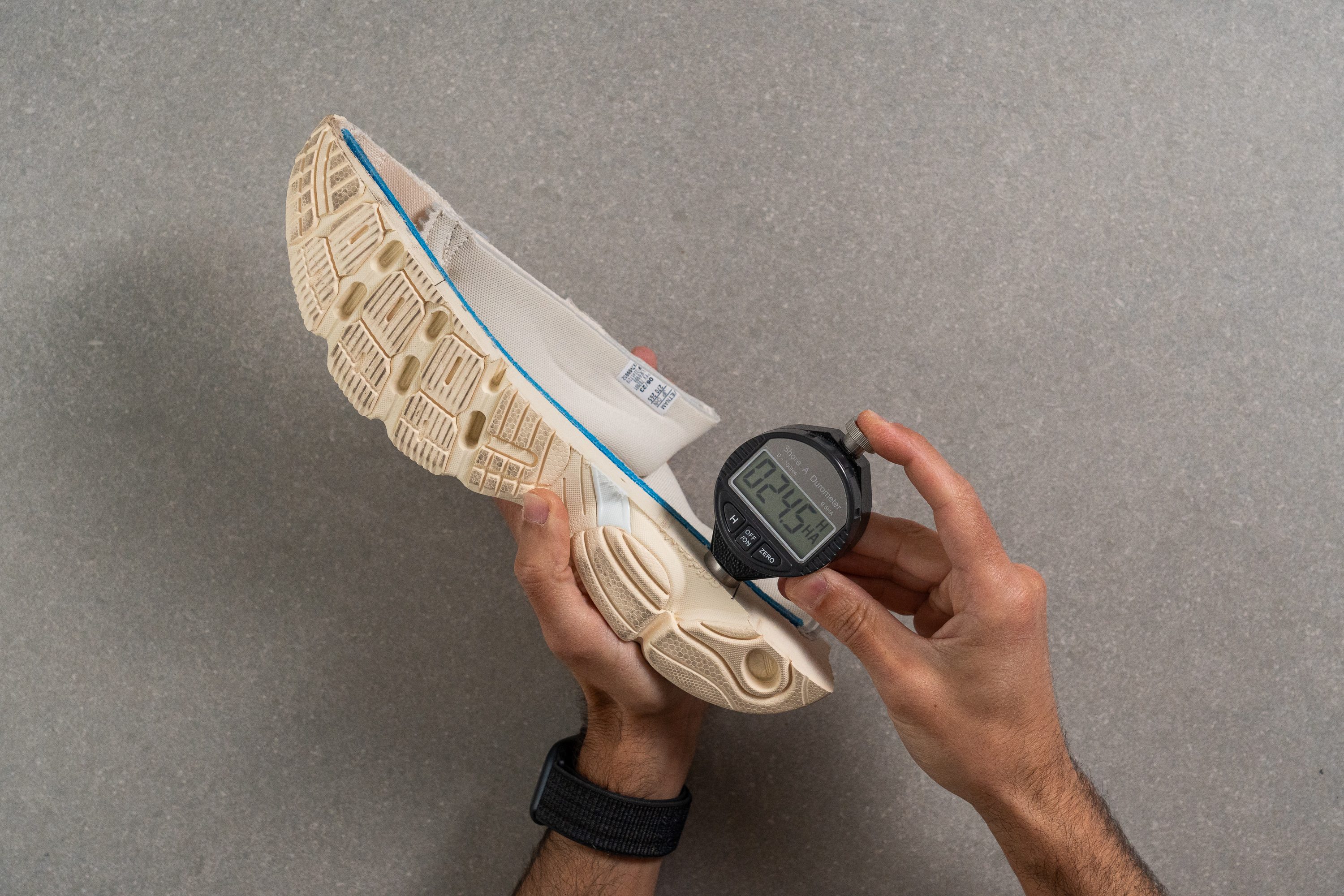
At 25.8 HA, our durometer indicated the Astir's EVA midsole is softer than average, which translated into an enjoyable ride.
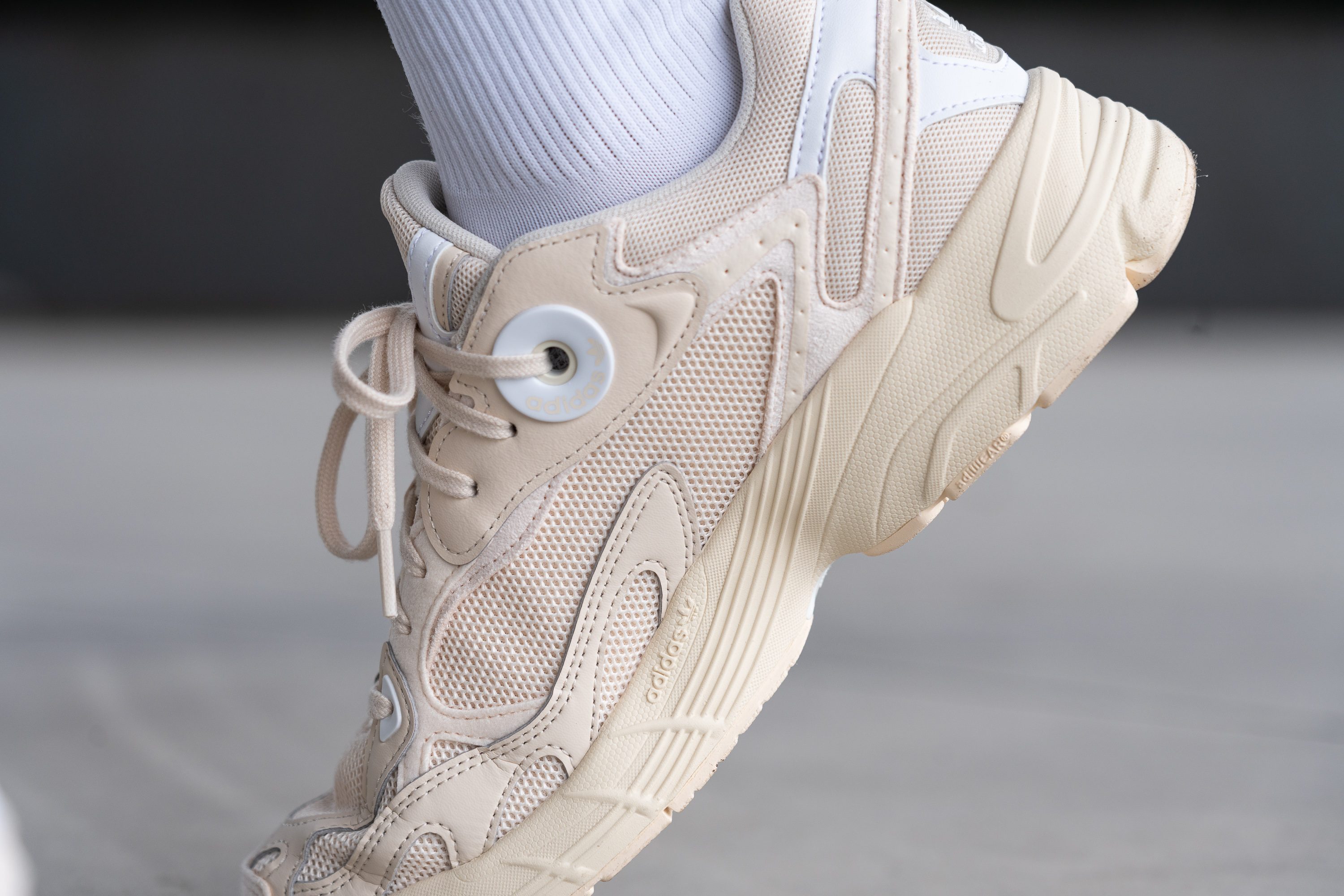
One of the things we love the most about this retro model is that it mixes the actually super trendy '90s vibes with a cosy feel for our feet. Even though it might seem big and bulky in the pictures, it doesn't look like that on foot at all!
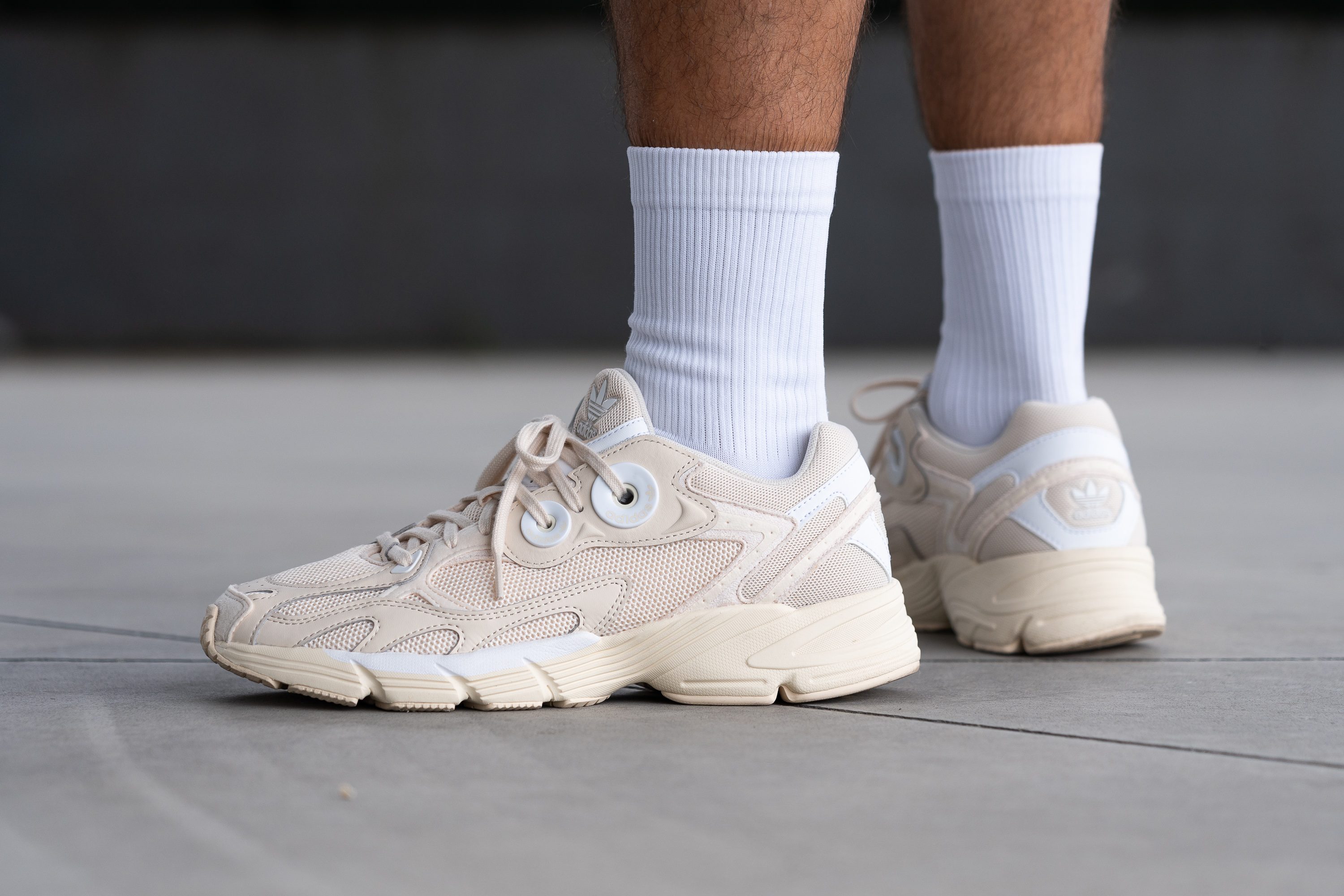
| Astir | 25.8 HA |
| Average | 28.6 HA |
Size and fit
Size
Adidas Astir fits true to size (12 votes).
Width / Fit
What makes these trainers not able to welcome wide-feet users is the fact that its toebox width at the widest part is average.
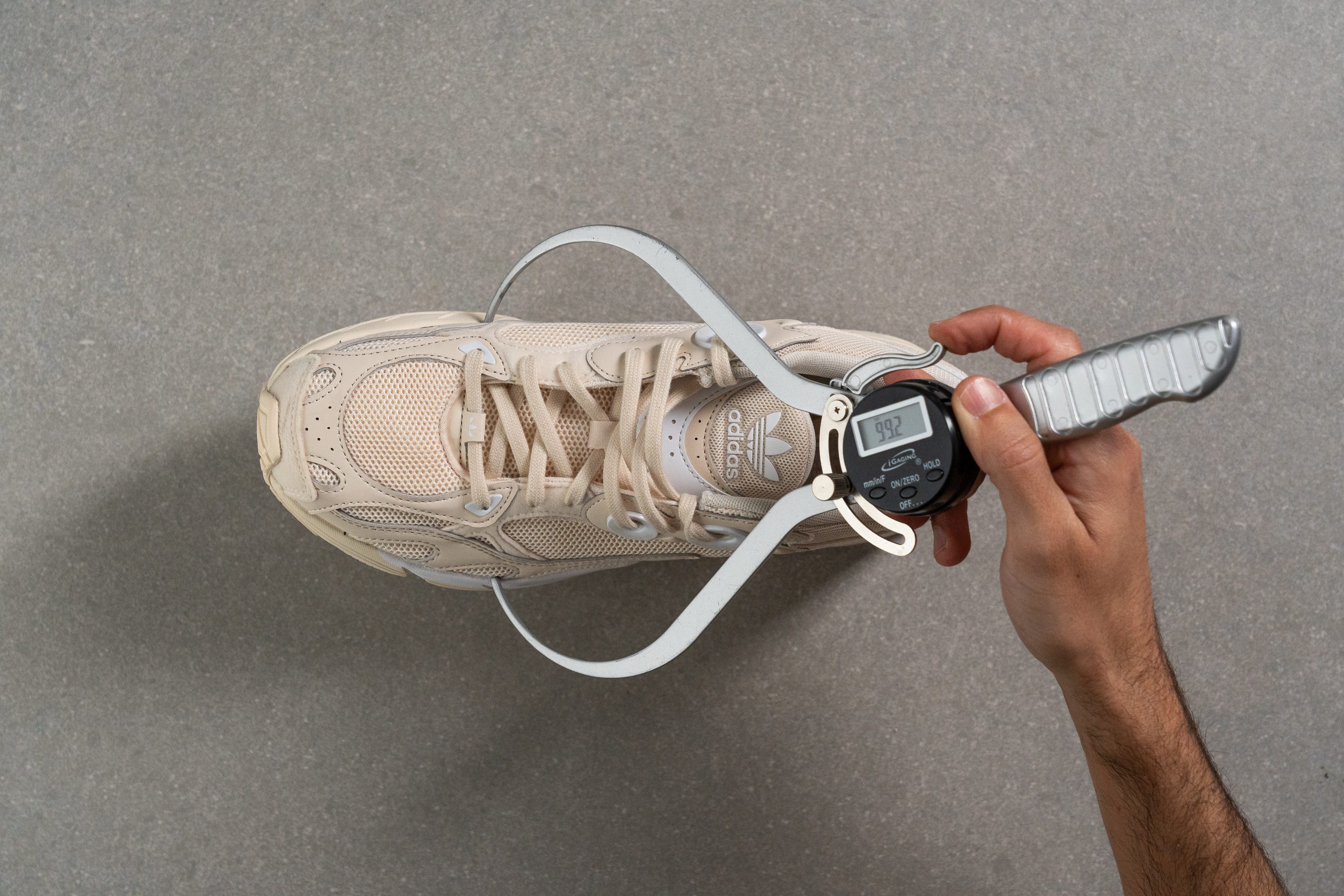
At 99.2 mm, our standard-sized feet were very happy and comfy. Yet, we believe this shoe might not be the best choice for people with bigger feet.
This test follows an older methodology, which is why you don't see recently tested shoes in the chart. Results from different methodologies can not be compared.
| Astir | 99.2 mm |
| Average | 99.0 mm |
Toebox width
Its toebox width at the big toe follows the same path, as its score is just average.

Our calliper showed 74.8 mm, which is a standard width. In conclusion, big-toed sneakerheads might have a hard time with this pair, as their toes will most likely feel cramped.
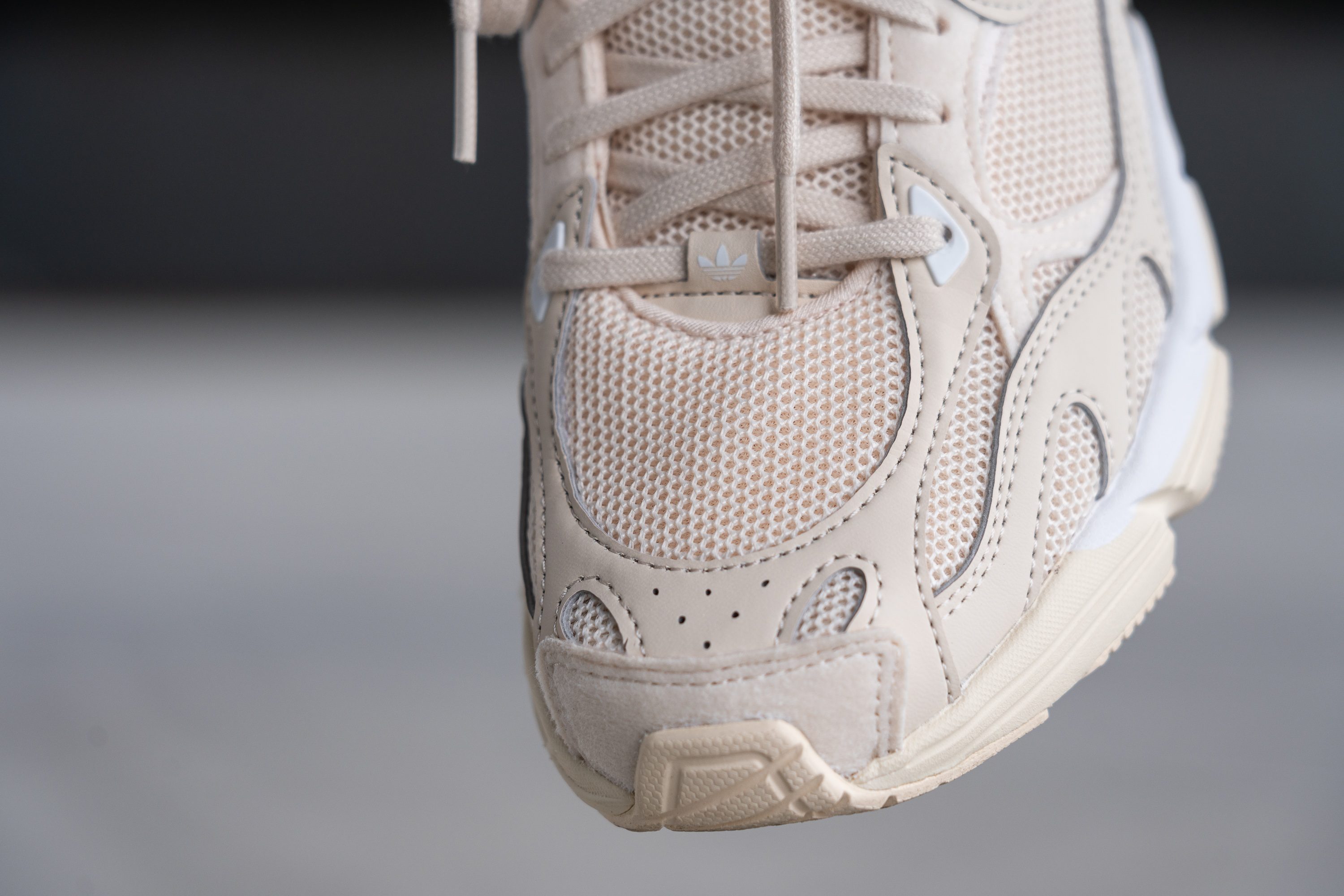
Our recommendation is to try it out in a shop, if possible. If that's out of the question, we believe the best might be to buy them online but on a website that has a nice return policy. The Adidas Astir might run small, so please keep that in mind!
This test follows an older methodology, which is why you don't see recently tested shoes in the chart. Results from different methodologies can not be compared.
| Astir | 74.8 mm |
| Average | 75.0 mm |
Flexibility / Stiffness
This Adidas' chunky self moved alongside our feet comfortably and easily. With its big and rough platform, we didn't actually expect it, so we were happily surprised!
At 20.4N, it's an enjoyable 15% less stiff than average. This flexibility translated into more of the comfort we've been talking about throughout the whole review, we just couldn't get enough of this shoe!
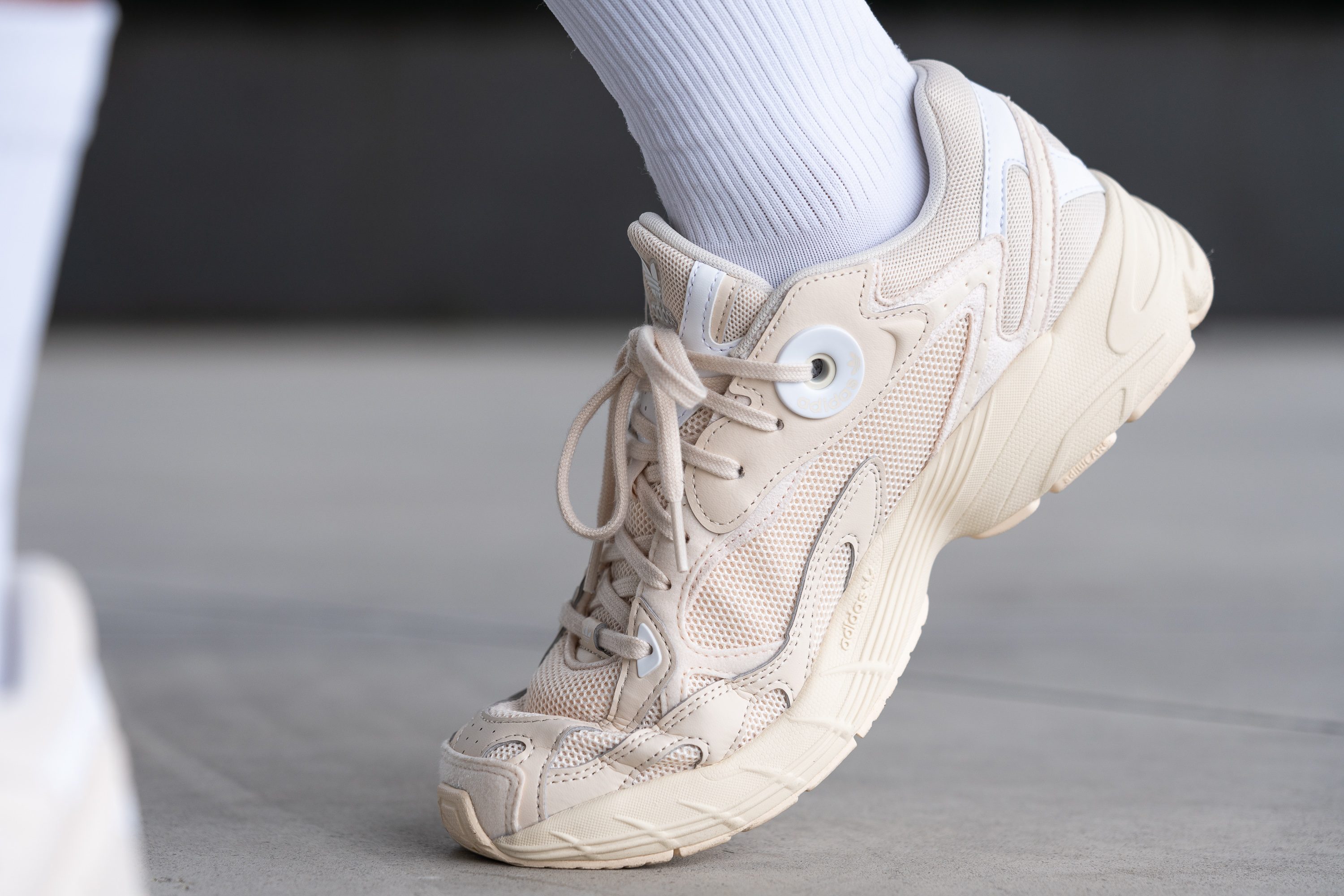
When we walked around town with these beauties, our feet didn't even get tired thanks to their lightweight. But it wasn't their comfort and stability that pushed us to wear them for days on end: it was the fact that they match pretty much everything we have in our wardrobe!
This test follows an older methodology, which is why you don't see recently tested shoes in the chart. Results from different methodologies can not be compared.
| Astir | 20.4N |
| Average | 23.3N |
Weight
We usually don't believe what our eyes tell us straight away, as we gotta know what our wear and lab tests say! In this case, if our feet could talk they'd definitely say they'd love to walk on this shoe all day. And even though our scale doesn't talk either, it shows a number, which is pretty close to speaking!
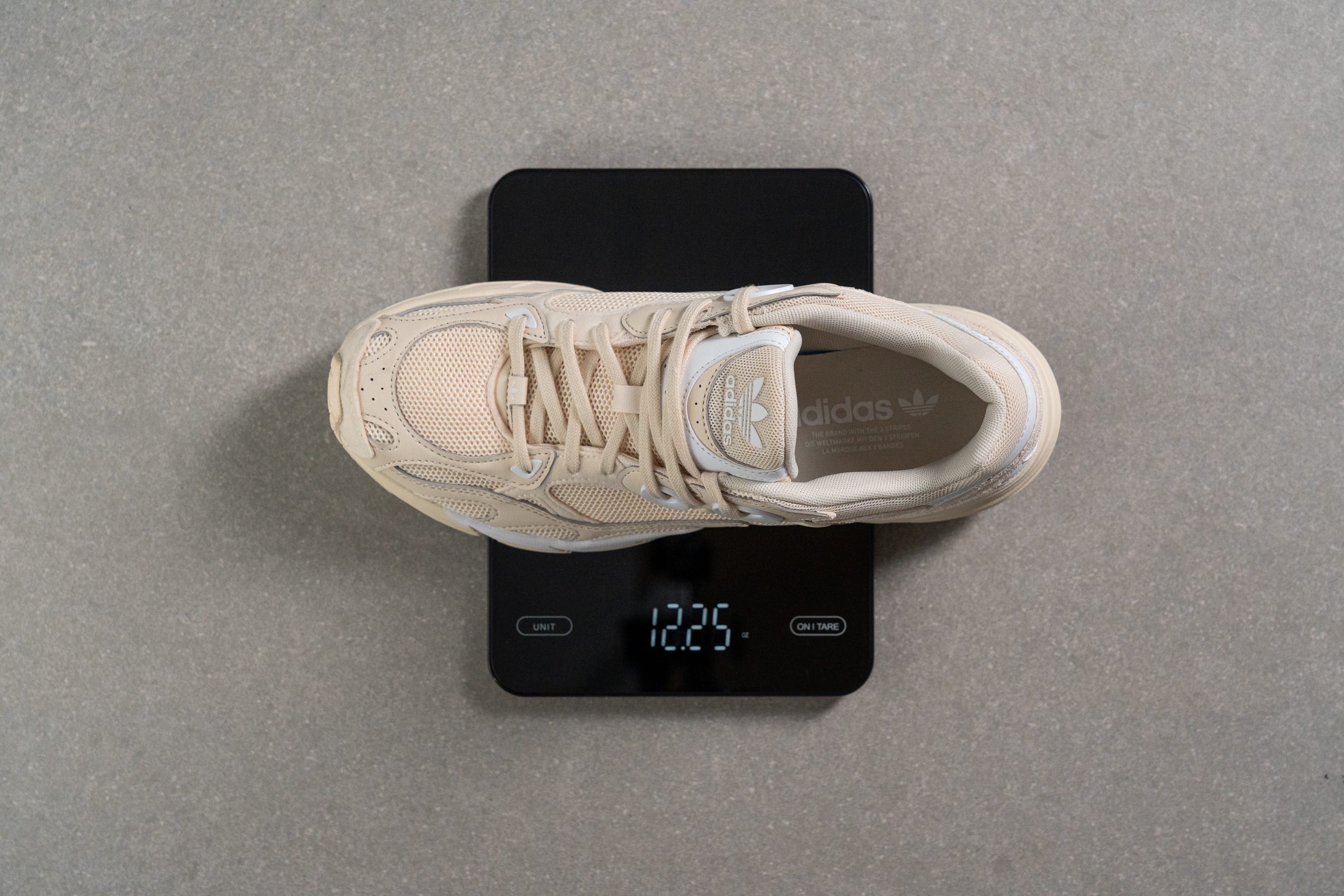
At 12.2 oz/347.0g, this model is way lighter than the average of its category! We absolutely loved it, and during our walks around we could happily feel it. What a breeze!
Being an incredible 14% lighter than the other trainers that have visited our lab is an incredible feat. Also, the chunky and rugged vibe and exterior of this shoe would never make you think it's not a heavy model at first sight, right? That's why it's so important to perform lab tests!
| Astir | 12.2 oz (347g) |
| Average | 13.8 oz (390g) |
Breathability
When we buy a pair of trainers because we absolutely fall in love with them, the first thing we want is to show our new pals to the world day and night! But there are some shoes that make our feet sweat way too much to enjoy them in the summer.
Let's see if the Astir is one of those!
Look at all that smoke coming out of our Adidas; that's some air flow right there, baby! In comparison with the Reebok Classic Leather, which struggled a lot more in our breathability test, we couldn't be happier with the Astir's result. That's why the Reebok model got a 2/5, yet the Adidas scored a well-deserved 5/5 in this same test.
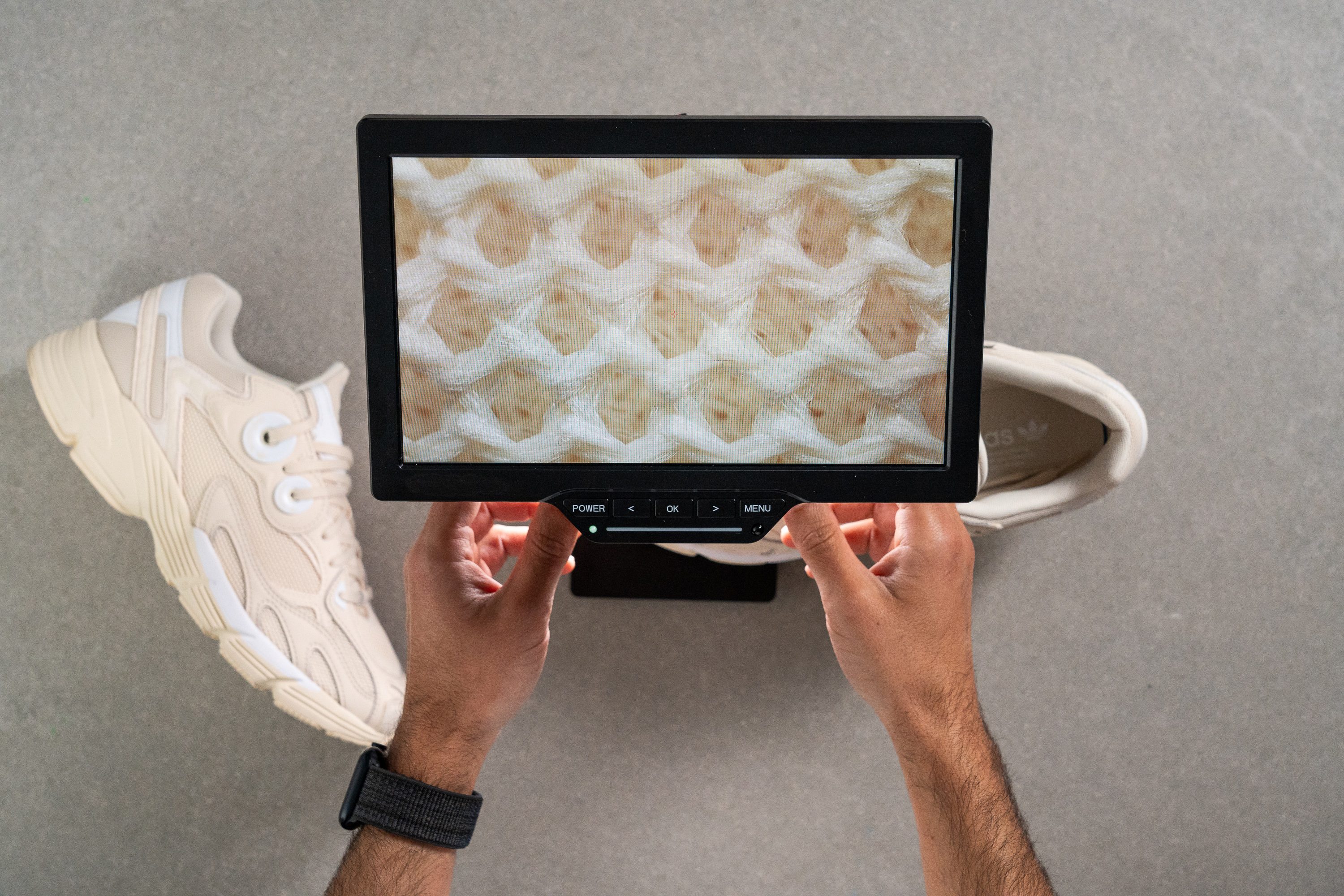
We used our microscope to get to know the material of this shoe's upper a little bit better. We saw a first layer with big ventilation holes, and then a second layer with some more!
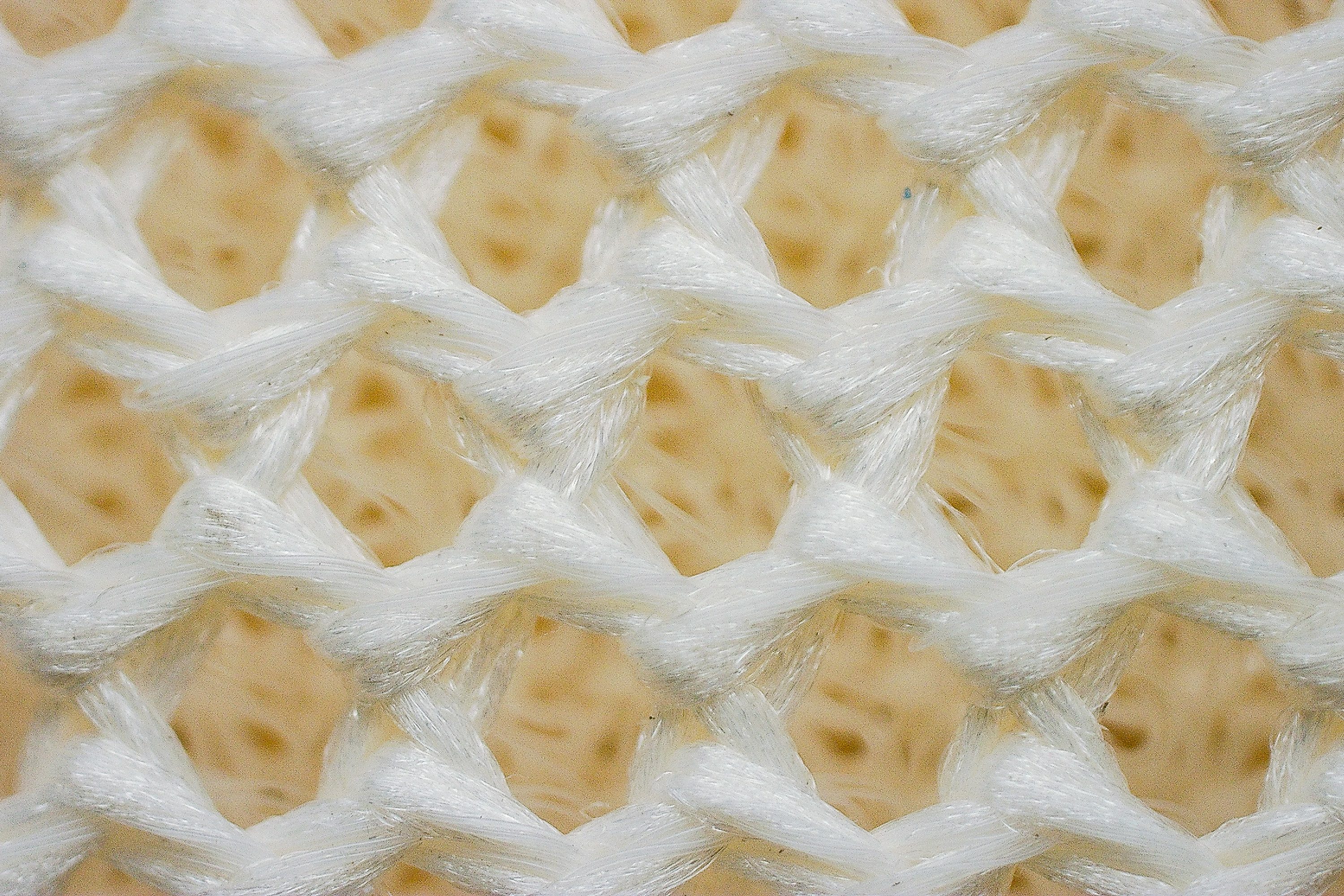
Its mesh upper worked wonders, and we felt the air get in and out during our wear tests when we walked around town. Apart from giving this Adidas a super retro look (which we absolutely loved), this material also gave it a wonderful score in breathability. Way to go, Adidas!
Our light test was the last evidence we needed to confirm our feet were totally right. Look at the light shining through the upper!
| Astir | 5 |
| Average | 3 |
Stability
Lateral stability test
This model's rugged vibes translate into its build, making us feel confident and safe during our wear tests.
It can be easily seen in the video: our wobbly ankles didn't stand a chance against the Astir's tough walls! Also, its padded and non-stretchy interiors and materials helped boosting our confidence. Even if we didn't tie the shoe super tight, we already felt stable and protected.
And that's priceless!
Torsional rigidity
Just a minute ago we were talking about safety, remember? The materials that each brand chooses for their shoes play a crucial role when it comes to feeling confident, and the minimum of 50% recycled content the Astir features knows it well!
Our fingers struggled a little bit, but that was all! We want to say that we really appreciated the fact that this Adidas pair was flexible enough to bend comfortable with our feet, following their movements; yet at the same time, its rugged structure kept us safe and sound.
| Astir | 4 |
| Average | 3.6 |
Heel counter stiffness
After our Dremel test, we thought that maybe this shoe's resistant heel padding would translate into sore ankles. But not at all!
Our fingers didn't need to press very hard to make the heel bend. So, even though this part is very durable, it wasn't rough with our ankles.
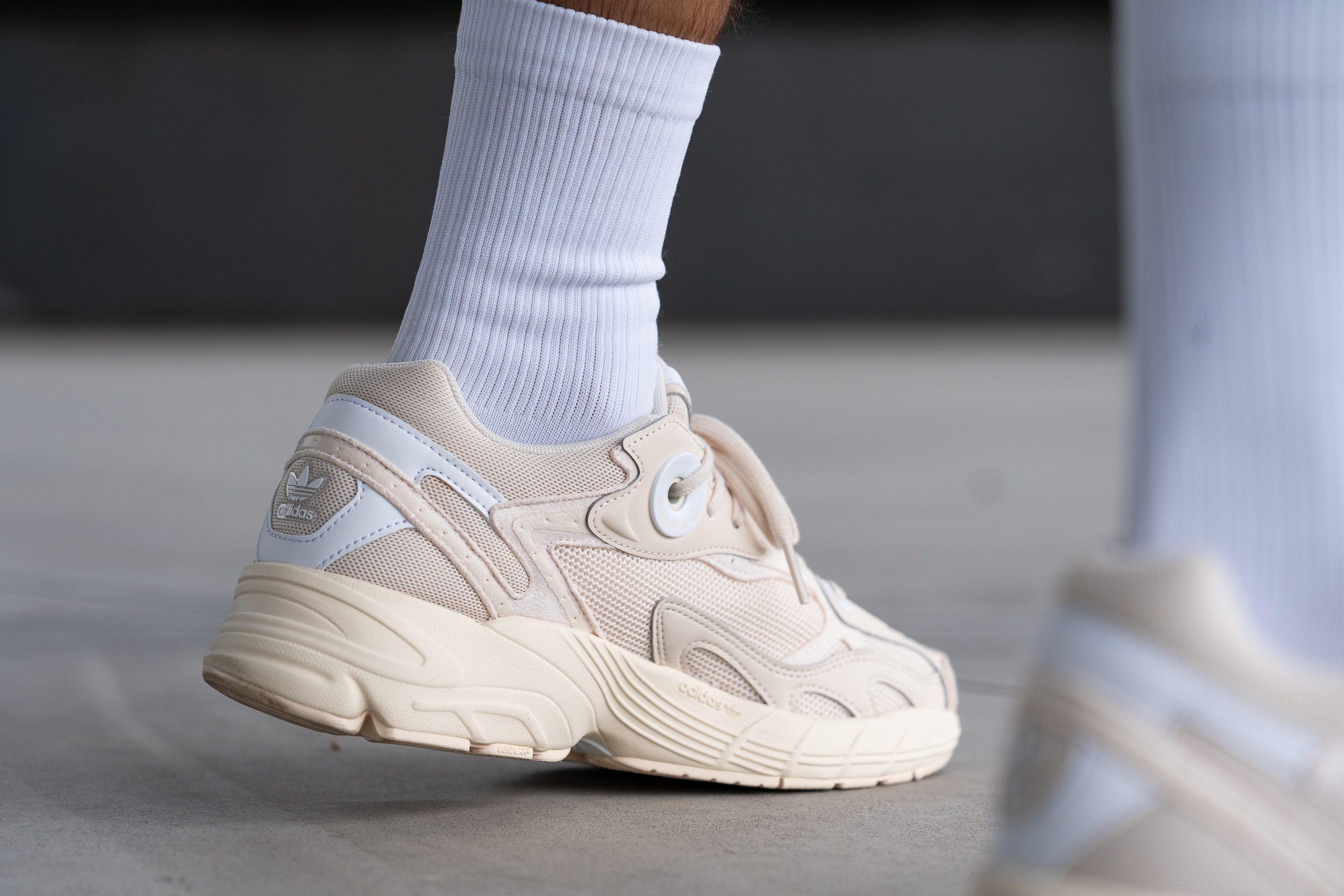
Isn't that what we call the best of both worlds? Yes, it is!
| Astir | 3 |
| Average | 3.2 |
Midsole width - forefoot
Safety? Stability? Suredfootness? Confidence? Yes, yes, yes, and..., yes again!
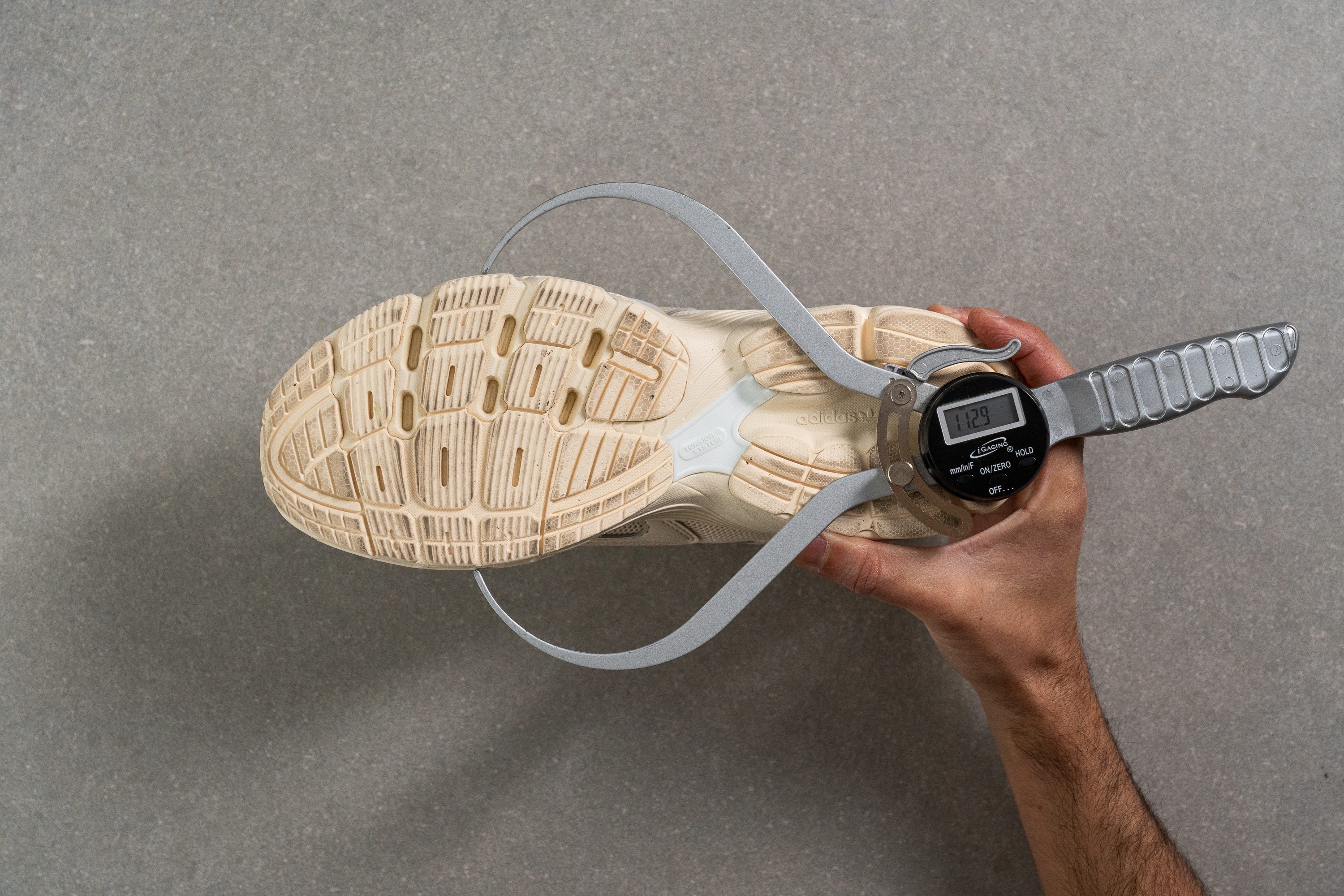
At 112.9 mm, the Astir's midsole width in the forefoot is way wider than average, and we loved it. The wider the platform, the more stable the shoe. This made us want to keep wearing it day and night!
| Astir | 112.9 mm |
| Average | 108.9 mm |
Midsole width - heel
At 89.9 mm, this Adidas midsole width in the heel follows the example of the forefoot: being way wider than average!
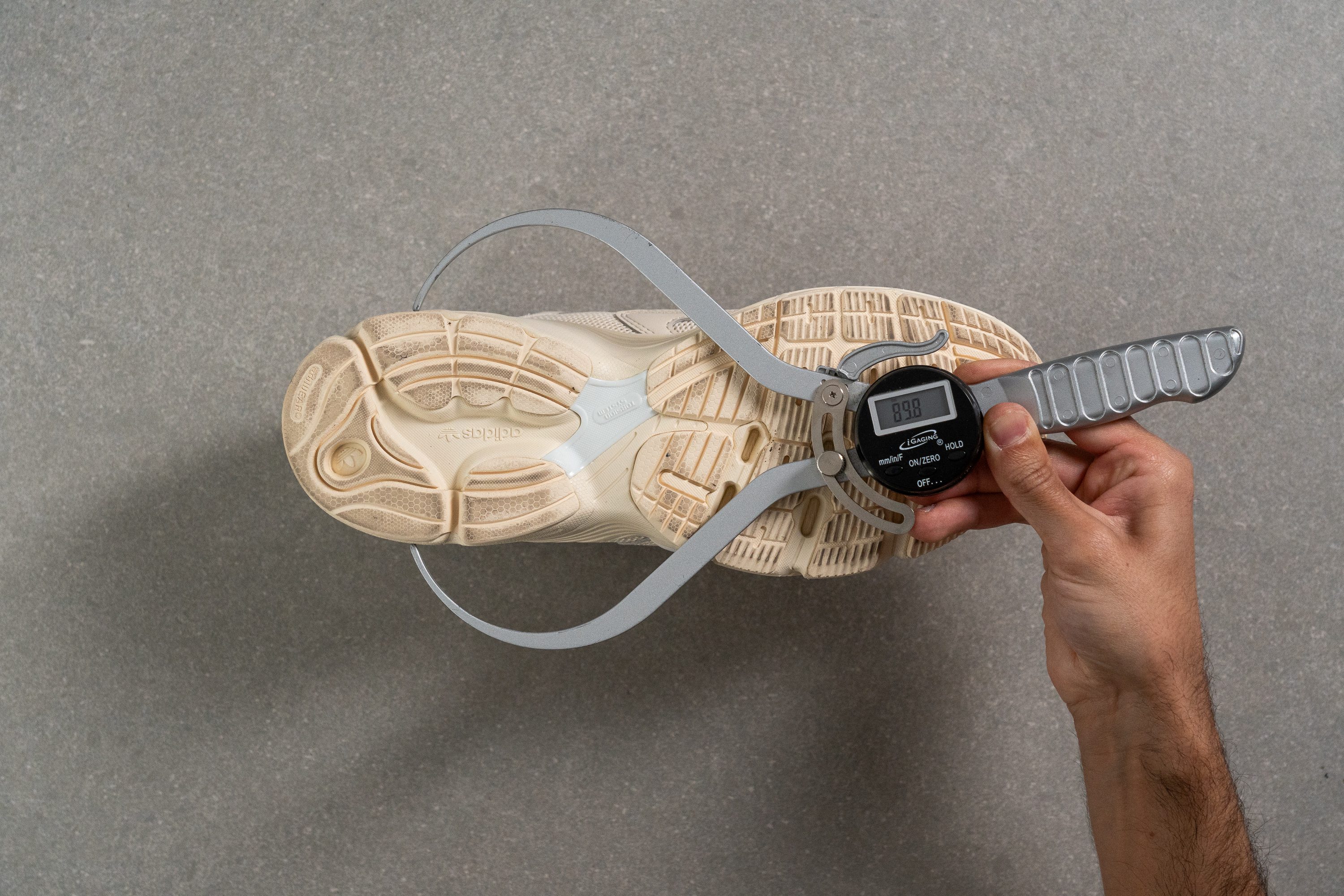
But this doesn't necessarily mean that this shoe is ready to welcome wide feet, though. We still have to make a couple more tests to verify that, stay tuned so you don't miss a thing!
PS: Our heels did slip a little bit from time to time, but we would not recommend going for a small size to fix this problem, as the Astir already runs small. We believe that might ruin your experience!
| Astir | 89.8 mm |
| Average | 84.0 mm |
Durability
Toebox durability
When a shoe gets a high score in breathability, it might mean that its materials are flimsier. But this Adidas didn't look like that at all! You know who's got the last word here, right? Exactly, our Dremel!
We were incredibly happy with this result. Like, look at the material! Could we even say that's a scratch?
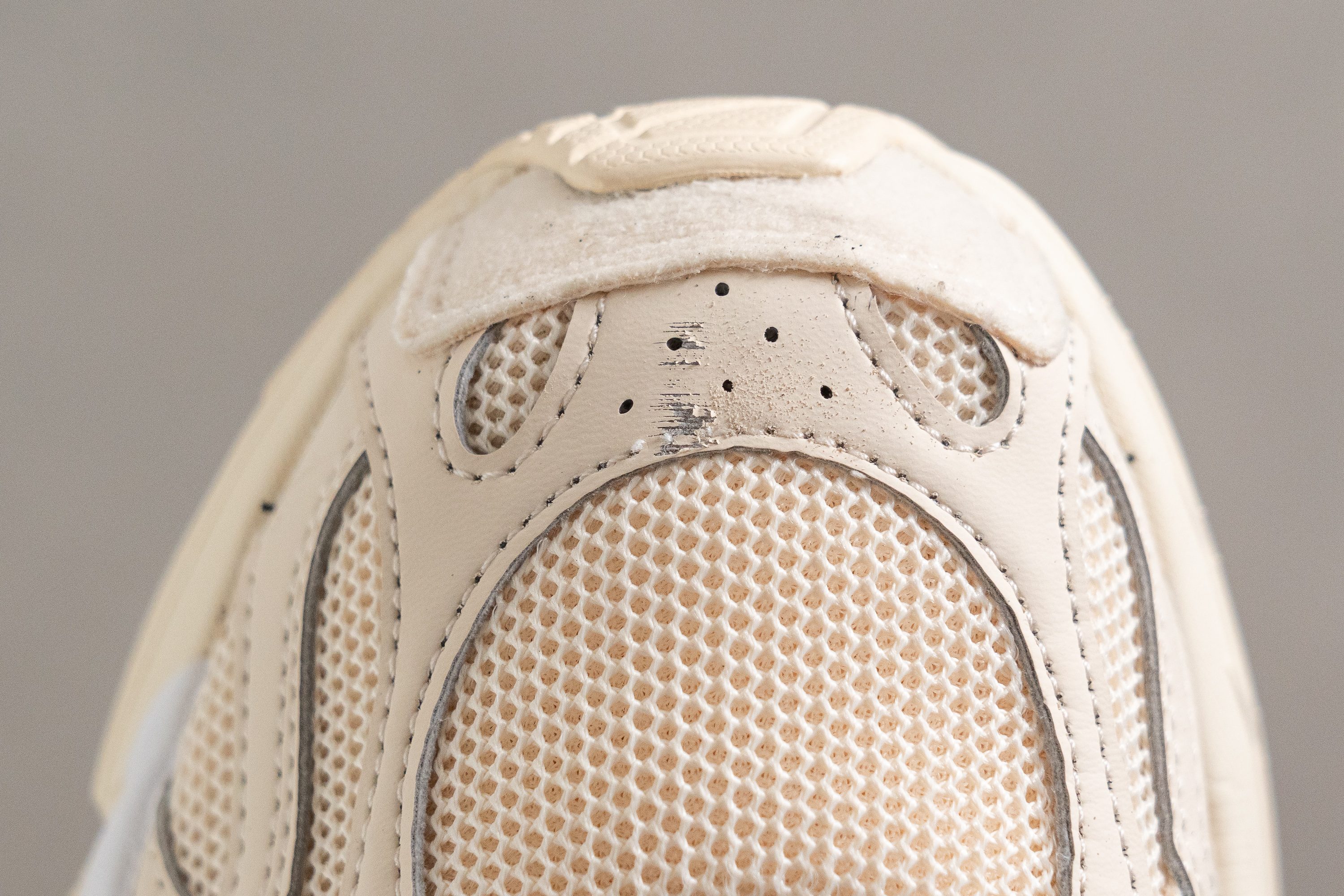
It looks like we just accidentally hit a rock, that's that! This shoe's leather layer over the mesh one protected its integrity amazingly well.
A 5/5 in breathability, and another 5/5 in toebox durability? Yep, the Adidas Astir made it possible!

Have a look once again at the Reebok Classic Leather. Our tool dealt way more damage to its toebox (3/5), even though both shoes were made using leather for their uppers!
| Astir | 5 |
| Average | 3.7 |
Heel padding durability
Well, Adidas Astir, so far so good! We couldn't wait to see if this model's scores would keep up being that wonderful. Let's go, Dremel, it's your time to shine!
This time, we focused on the heel padding durability. We moved our tool all the way back and attacked the area at 5K RPM with 3.2N of force during 4 seconds.
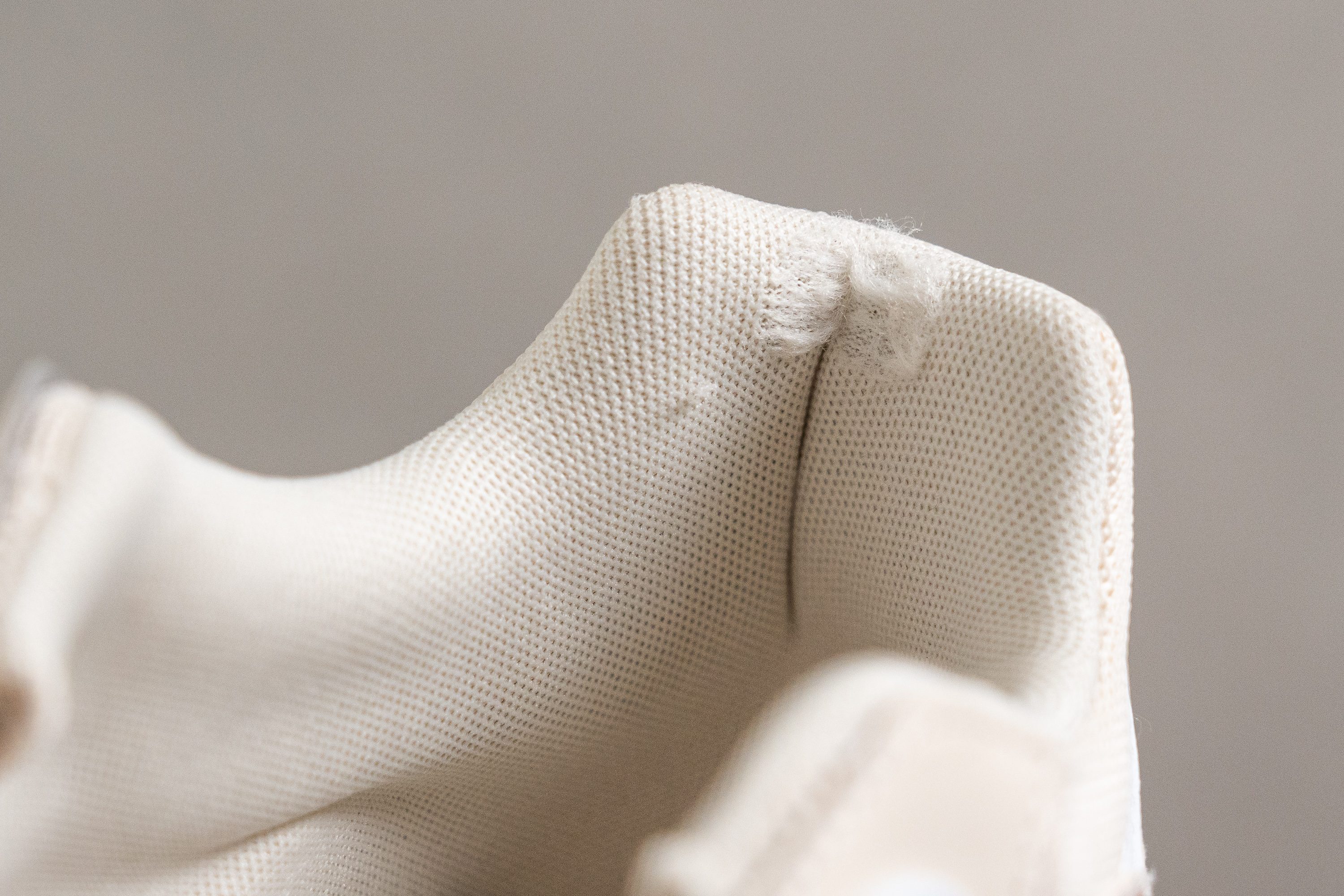
We had high expectations, and we were totally right! Even though the mesh got a little bit messy, it didn't have a negative impact on the shoe's integrity.
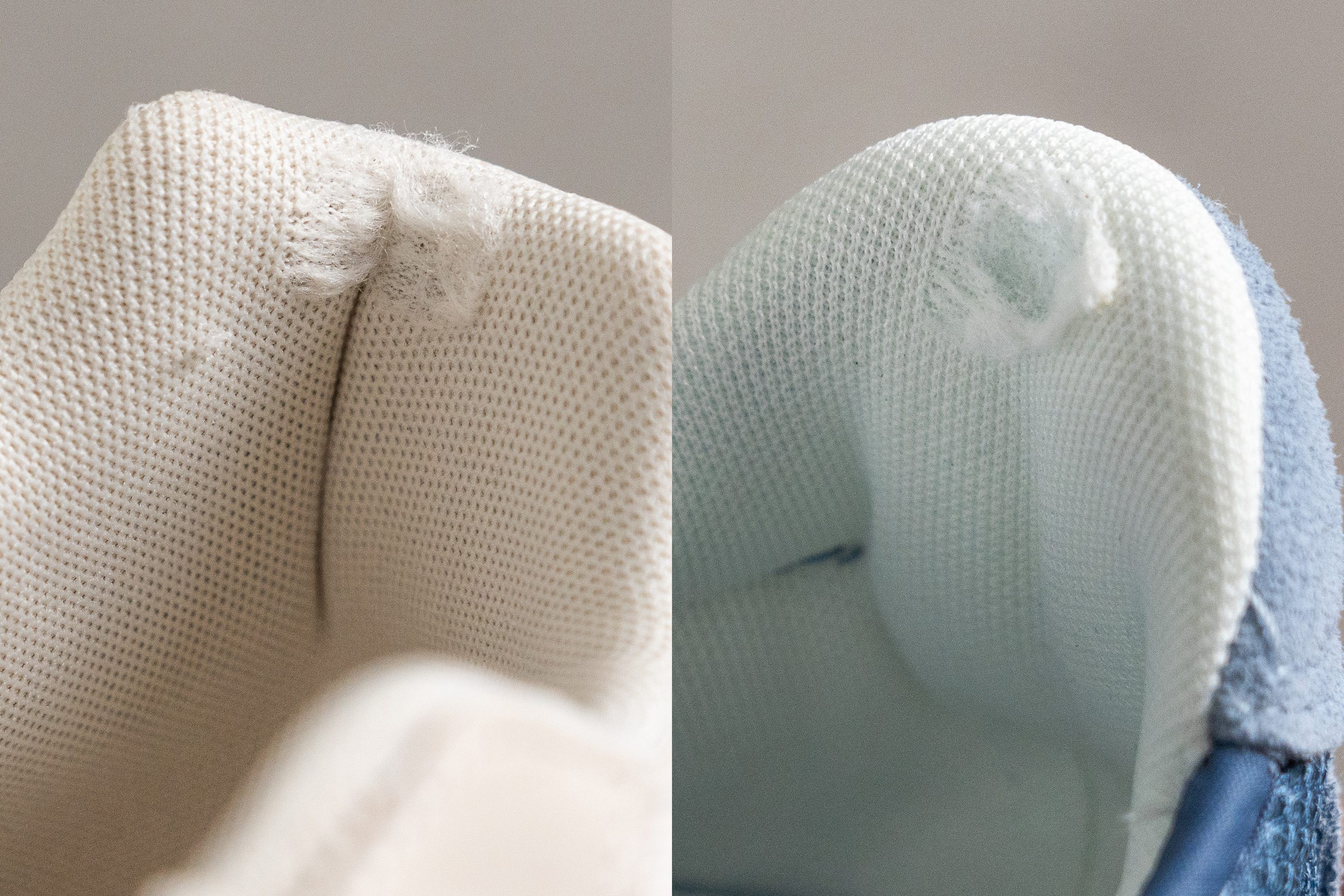
We believe it's easier to understand why we give this or that score when we compare the results with another shoe. That's one of the reasons why we always perform the tests in the same spot, too!
As you can see, the Adidas Astir (on the left) ended up with way less damage than the New Balance 327 (on the right). We gave it an incredible 4/5 in our heel padding durability test; don't forget this is one of the most vulnerable parts of a shoe! The NB pair ended up with its padding being destroyed by our Dremel, so it got a low 1/5.
| Astir | 4 |
| Average | 3.2 |
Outsole hardness
At 87.0 HC, our durometer indicated this shoe's outsole is slightly harder than average.

But the shoe didn't feel hard at all under our feet. Look!
This level of hardness usually means there's a nice balance between grip and durability. In this case, we'd say the Astir's outsole might focus a bit more on being a toughie. Let's ask our Dremel!
| Astir | 87.0 HC |
| Average | 85.7 HC |
Outsole durability
Spinning this one time at 10K RPM and with our typical 3.2N of force, our Dremel attacked this shoe's outsole for 22 seconds.
You can see it clearly in the video, it feels like the tool isn't even dealing any damage!
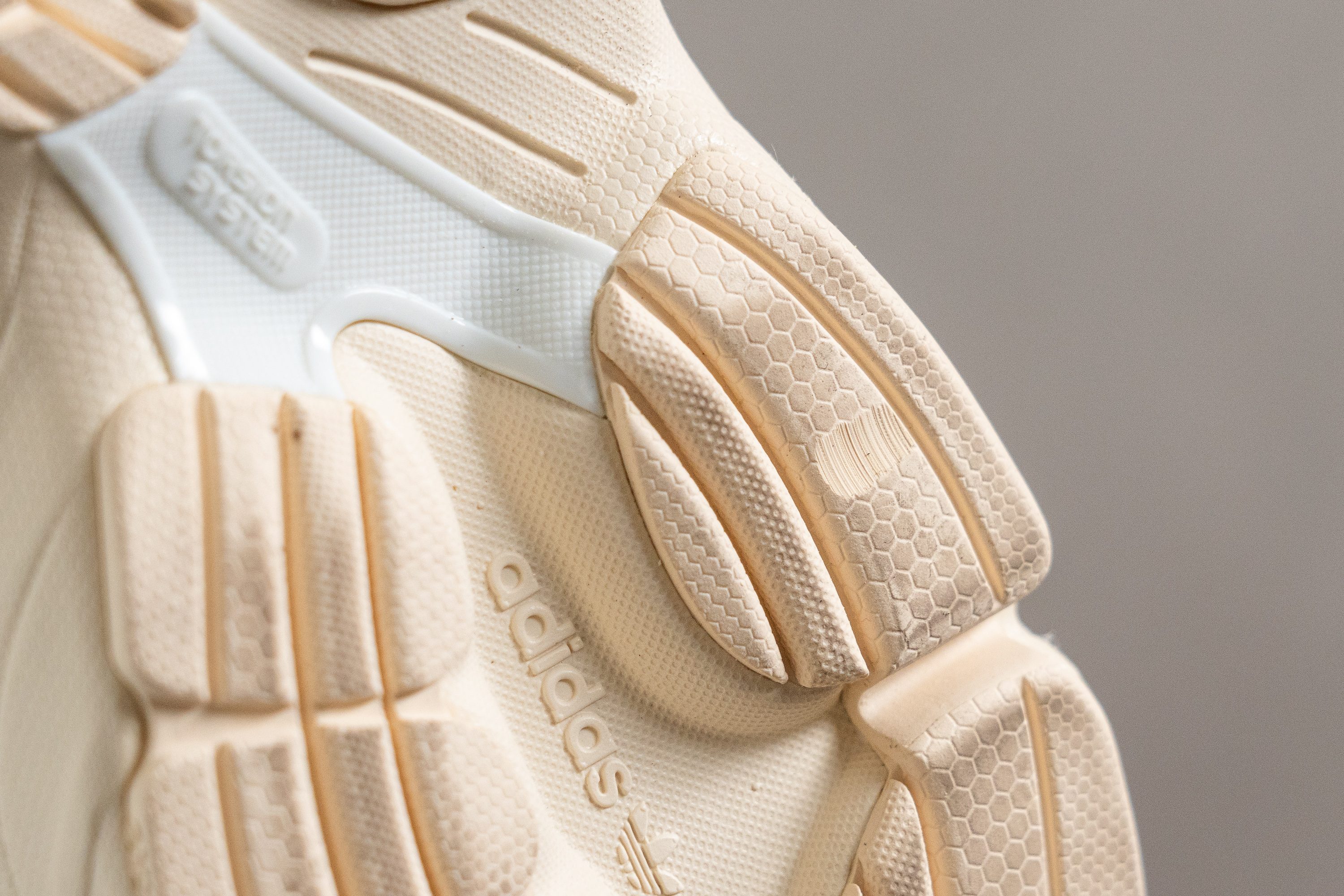
Just look at that! Our gauge measured it at 0.6 mm, which is an incredibly 40% lower than average. We were really happy with this result, as it meant that the shoe's outsole is going to last longer!
| Astir | 0.6 mm |
| Average | 1.1 mm |
Outsole thickness
As the material used for the outsole showed promising durability, we believe Adidas decided to go for a thinner-than-average layer at the bottom.

At 4.0 mm, our calliper indicated the outsole of the Astir is 29% thinner than average. But wait, this is not necessarily something bad! First of all, the material used is tough; and second of all, this helps the shoe reduce its weight!
This last part is something we really appreciate during our wear tests. A lighter pair means feet that don't get tired too quickly, and it just made us want to wear the Astir more and more.
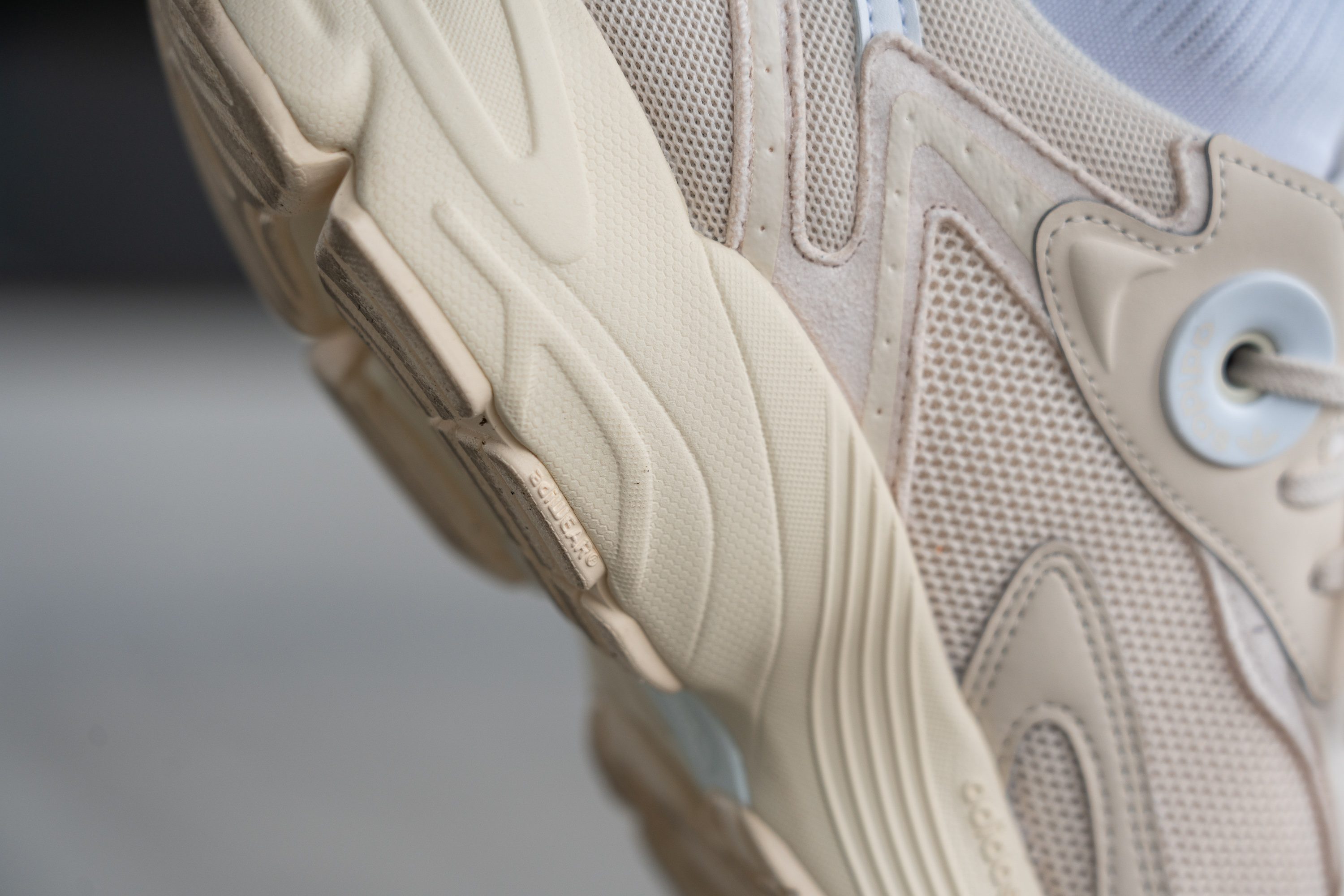
Way to go, Adidas!
| Astir | 4.0 mm |
| Average | 5.3 mm |
Misc
Insole thickness
The Adidas Astir has a removable insole that scored 3.7 mm in our calliper reading.
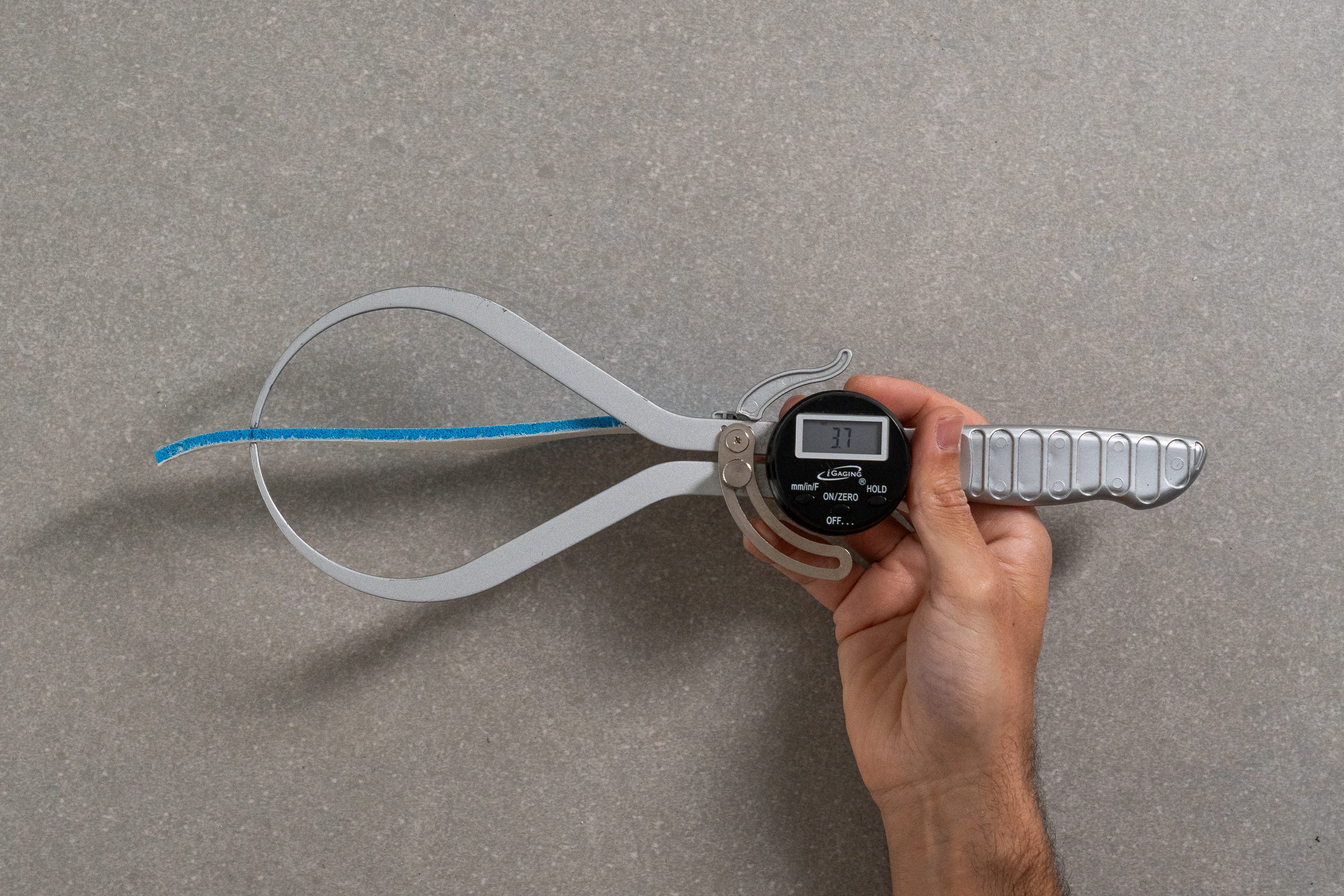
We believe this is a nice strategy by Adidas to reduce the shoe's overall weight. As the insole of this model can be changed, you can always use your own orthotics if needed. Still, we found this model pretty comfortable!
| Astir | 3.7 mm |
| Average | 5.1 mm |
Removable insole
Things just keep getting even better, even though we spoiled this one a couple of sections ago!
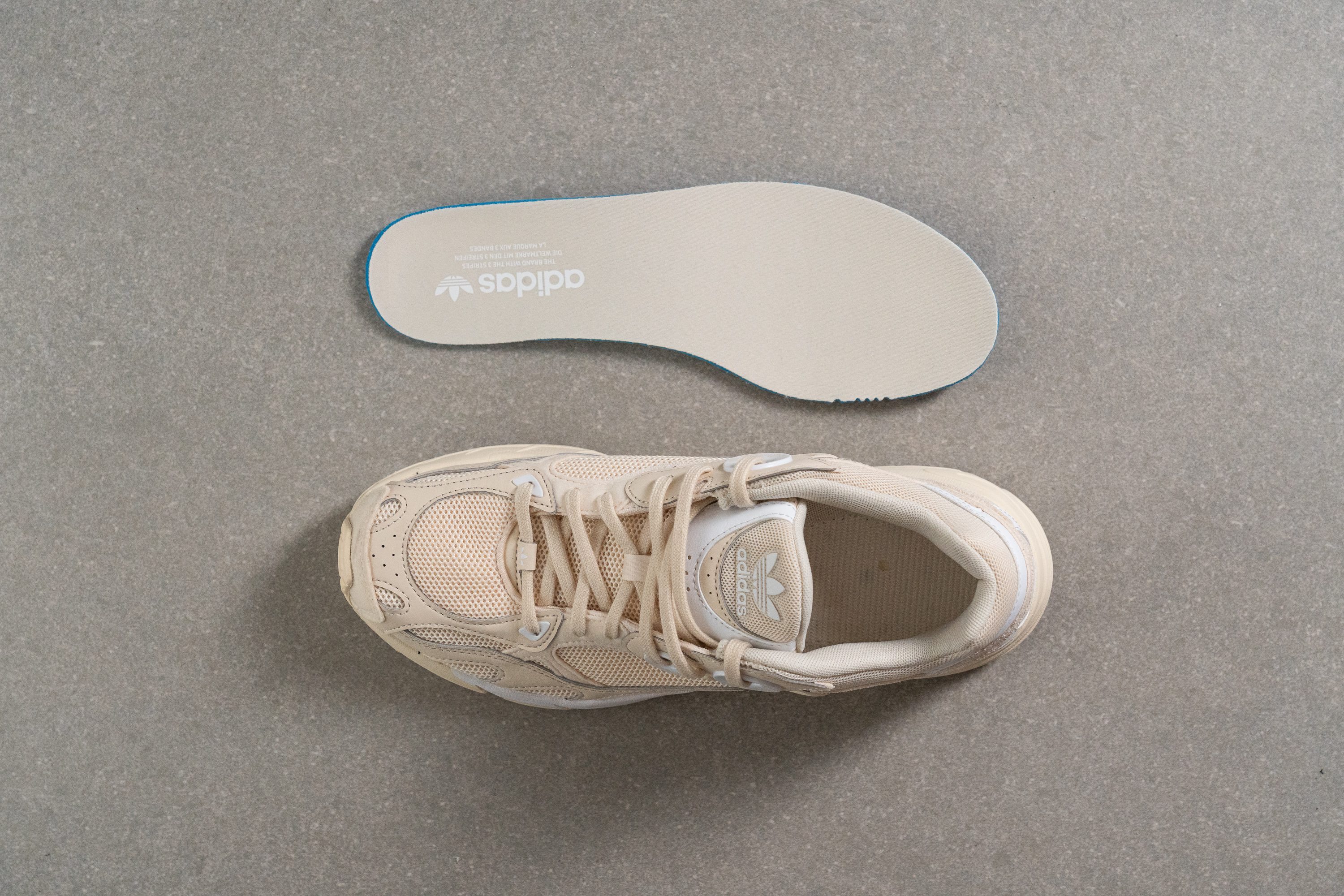
Exactly: a removable insole! This means you can always use your own orthotics with this pair, no matter if you have any specific needs or if you just want some extra support.
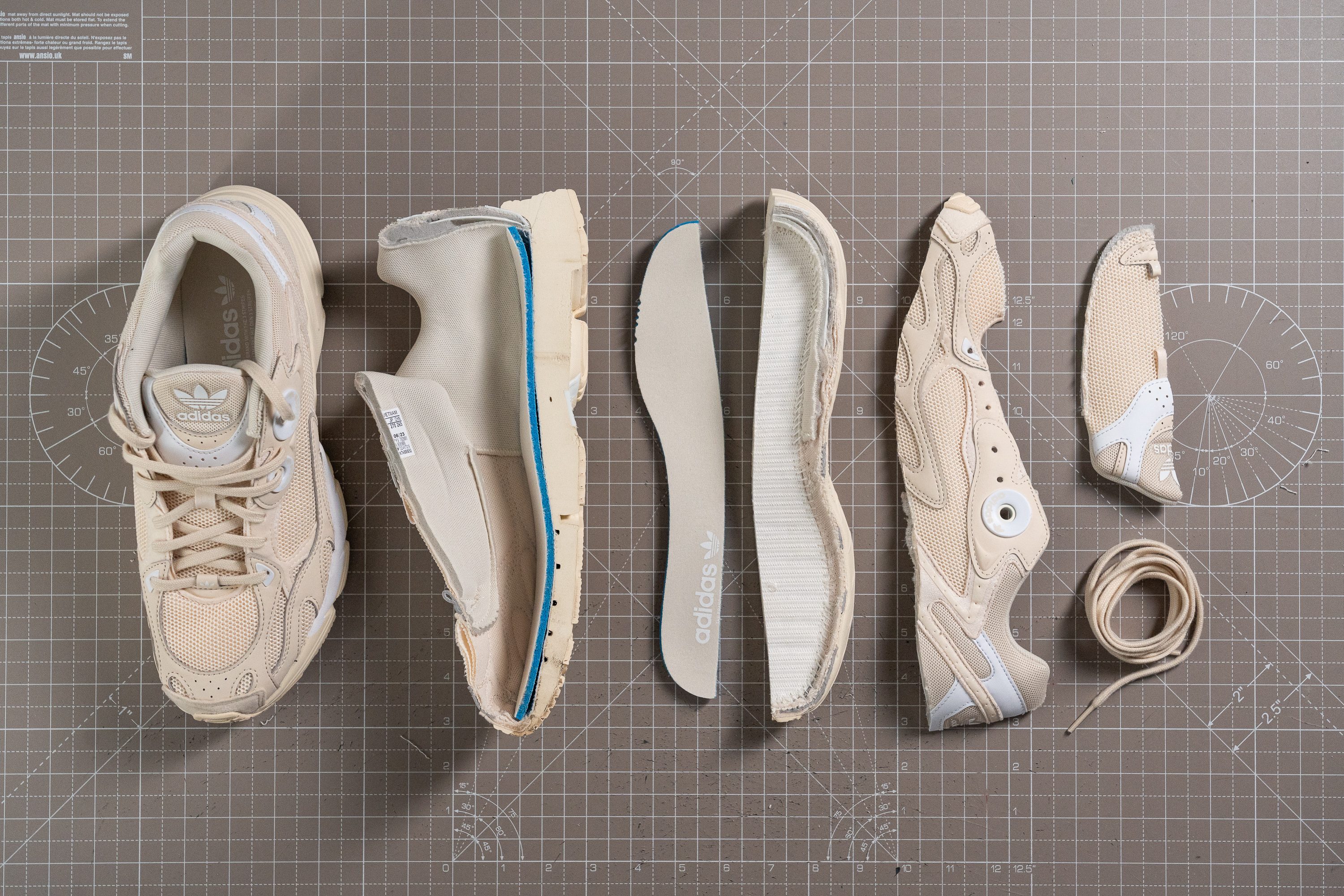
| Astir | Yes |
Reflective elements
This Adidas doesn't have any reflective elements, but it's not like we expected them either!
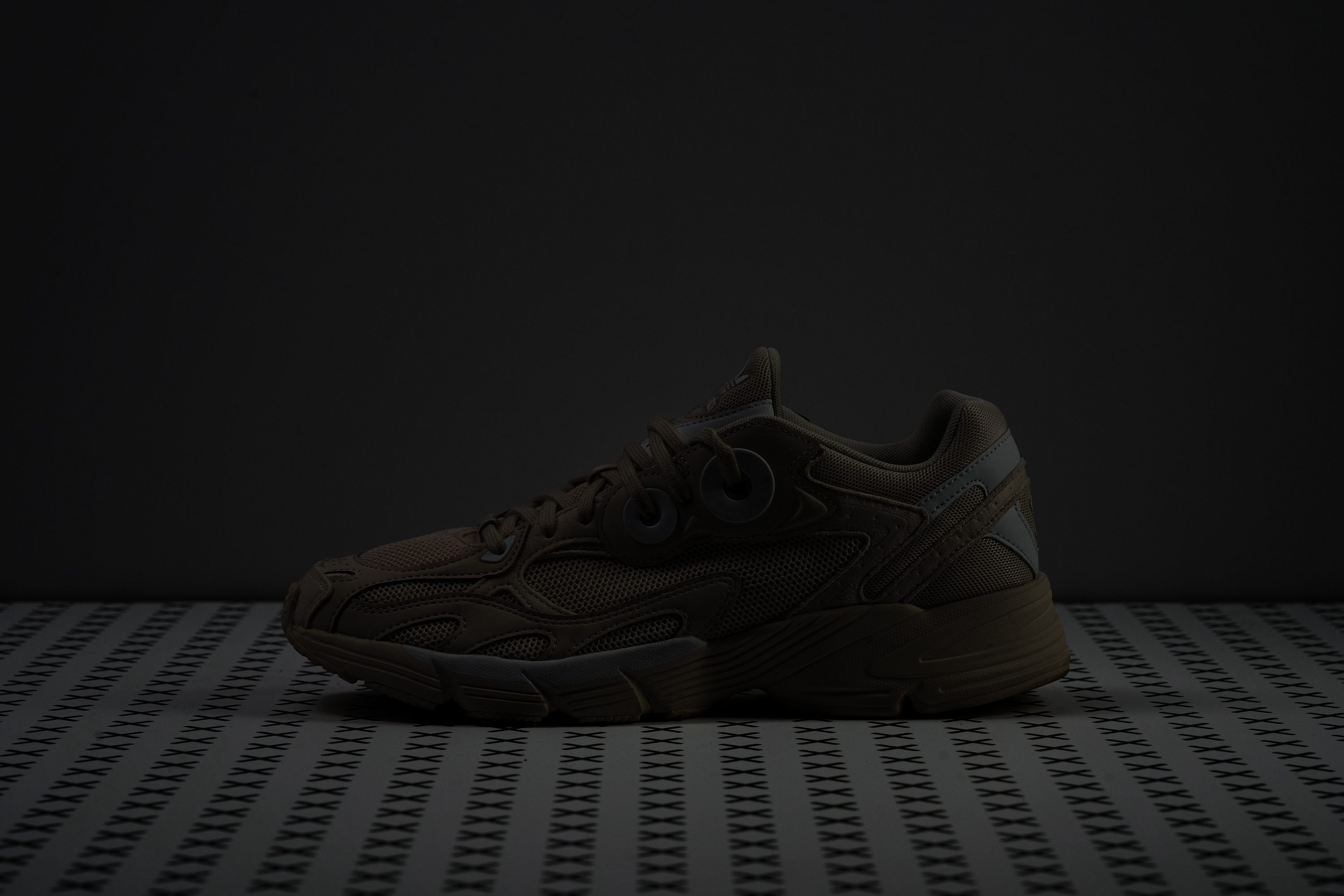
| Astir | No |
This section is a work in progress
Tongue padding
It was the tongue that gave the Astir's design the final touch regarding comfort and surefootedness.

At 9.7 mm, it's wider than average, and it hugged our feet comfortably. It rested nicely on our instep during our wear tests, and it helped making the whole fit even better.
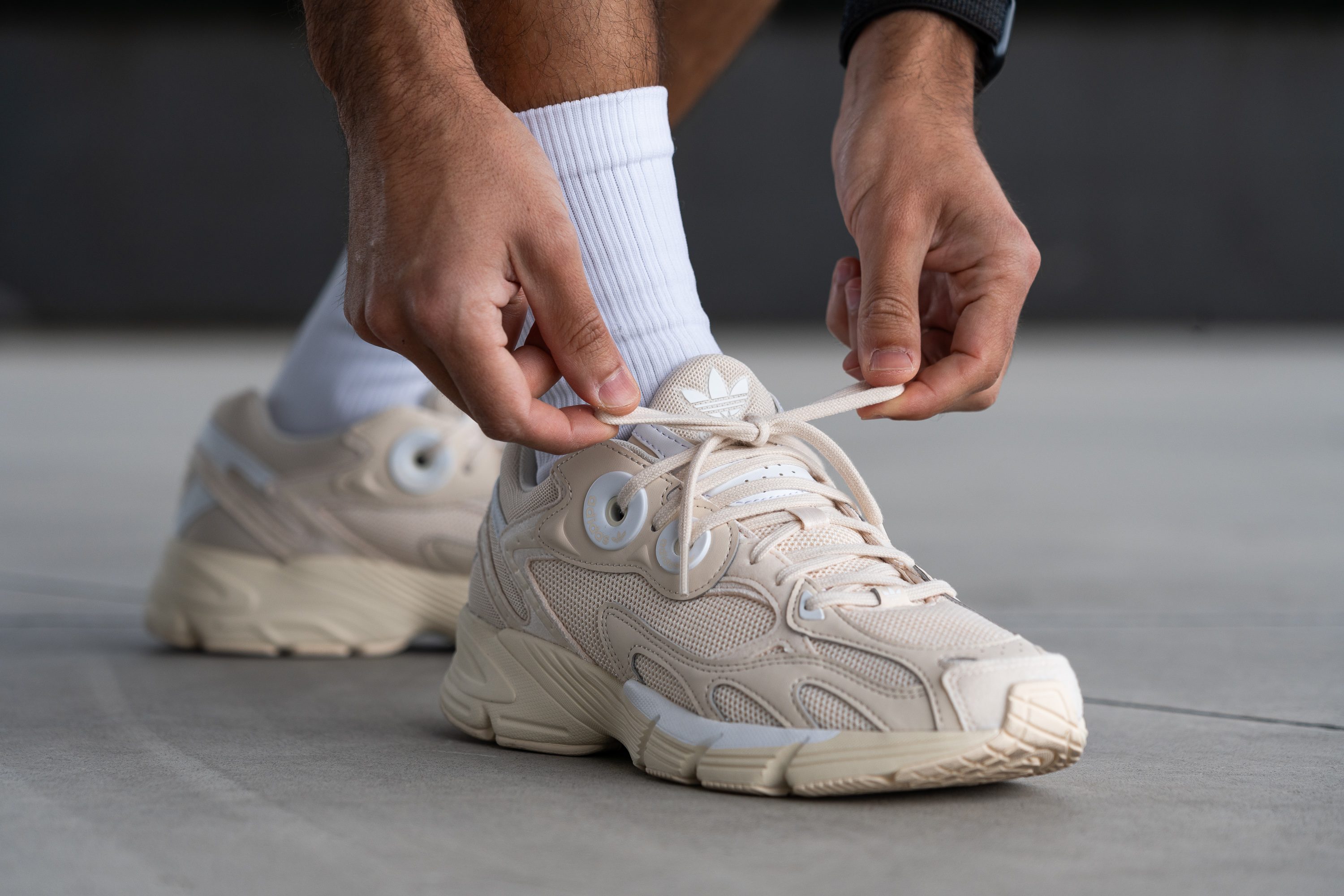
| Astir | 9.7 mm |
| Average | 9.6 mm |
Tongue: gusset type
A non-gusseted tongue once again reduces the overall weight of this pair.
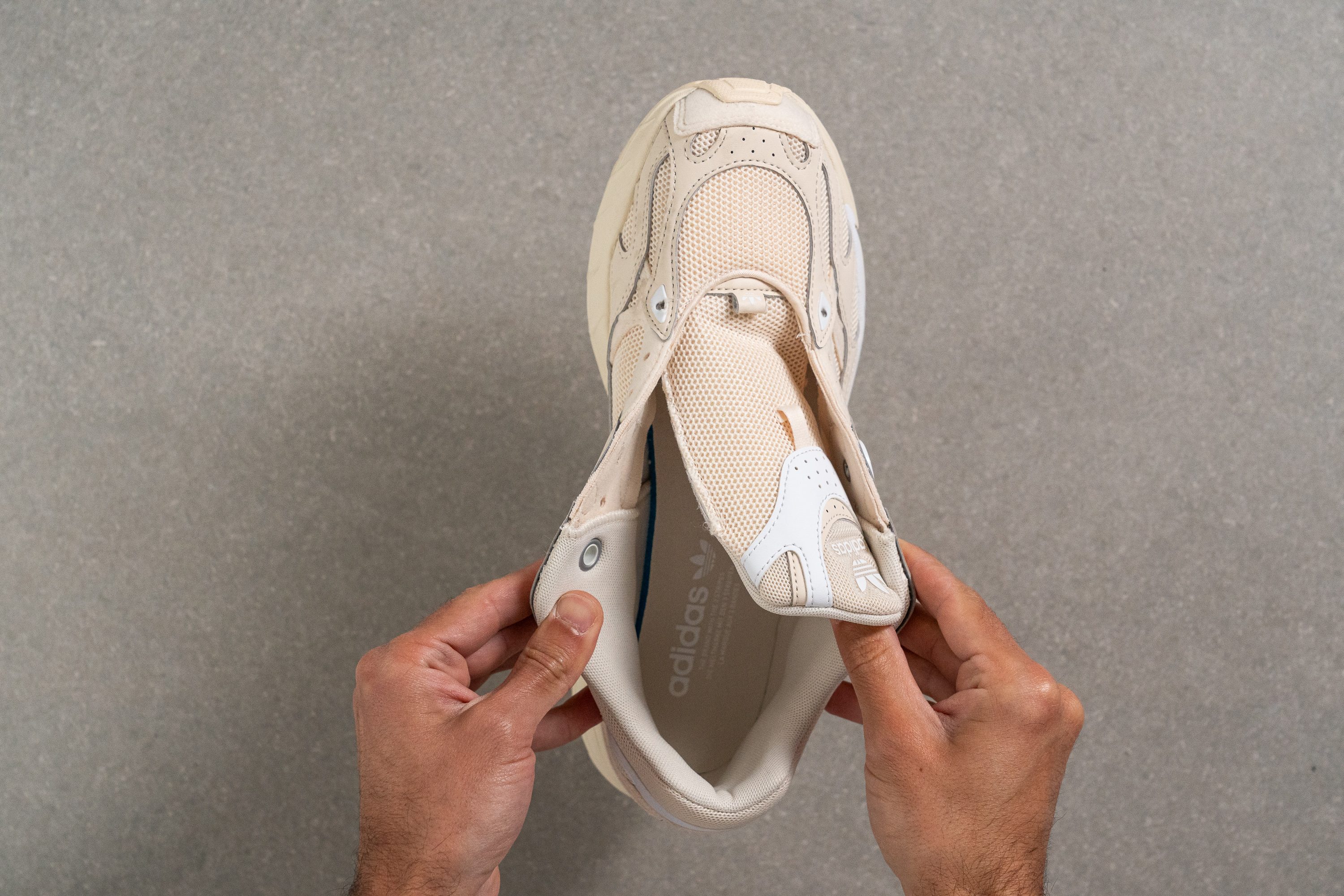
Honestly, we didn't actually expect a gusseted tongue in a pair of trainers! And it wasn't like we missed it either. We just found this design great when we were in a hurry and had to slip on our shoes as soon as possible. Look at that wide opening!
| Astir | None |
Heel tab
No heel tab around! Adidas went for a full retro look with the Astir, and we couldn't like it more.

To add even more flavour to its '90s cocktail, this shoe has the old Trefoil logo at the back. Additionally, it features a big plastic round detail that hugs the eyelet. These nice touches totally match the whole vibe of the Astir.

It's just so aesthetically pleasing. Great job, Adidas!
| Astir | None |

